|
Hsinchu is not only Taiwan's technological hub, but is also rich with historical sights, Hakka culture, and natural beauty. It has numerous old streets, preserved Japanese-era and Qing-era buildings, zoos, mountains, lakes, rivers, beaches, and much more to explore. It is definitely worth a stop on your next trip to Taiwan.
History of Hsinchu: After the settlement of the area by Han Chinese farmers in about 1711, what was then known as Zhuqianshe became the most important economic area in northern Taiwan. By 1723, a walled city was built here out of bamboo, because brick walls were forbidden for fear of a revolt against the Qing authorities. The name Zhuqiancheng (竹塹城) literally means bamboo moat city. The bamboo-walled city had four gates and its perimeter was about 1.4 KM long. In 1806, the city was upgraded with earthen walls. In 1828, the city walls and gates were finally made into brick, with the perimeter covering 2.7 KM, and walls 5 meters high, the center of the city being the Chenghuang City God Temple. In 1901, the Japanese government decided to redesign the City of Hsinchu and destroyed all the gates and walls except the existing East Gate. In the ROC era, the Hsinchu Science Park was established in 1980 under President Chiang Jingkuo, and was made to model silicon valley. TSMC, Taiwan's most important corporation, was formed in 1987 with its headquarters in the park and created a technological hub, making Hsinchu indispensable to Taiwan's economy. When to visit: It is best to visit from April to November when the weather is warm and less windy. There is a constant, cold northeasterly wind from December to March especially along the coast. However, the winter in general is more dry. Where to stay: Most of the accommodation you will find is near the city center. If you will only visit downtown, you can consider a day trip from Taipei. We have stayed at and recommend the Golden Motel a high quality motel near Green Grass Lake (you can book on Agoda here, Booking.com here, Hotels.com here, Expedia here, or Trip.com here), and CD Motel, another high quality motel in downtown Hsinchu (you can book on Agoda here, Booking.com here, or Trip.com here). Unfortunately I cannot recommend any further hotels that I have stayed at in Hsinchu because usually we stay at my wife's uncle's house. You can find out where to stay in our Taiwan hotels guide or search for the best hotel deals in Taiwan here. You can also book Wifi and SIM cards for Taiwan on Gigago here. Need travel insurance? Compare prices on Insubuy here. How get to Hsinchu? You can book tickets to travel to Hsinchu via inter-city bus on Klook here. You can book tickets to Hsinchu via high speed rail (HSR) on Klook here or KKDay here. Book tickets via the normal train (TRA) on Klook here. How to get around in Hsinchu: As always, we recommend renting a scooter as the best way to see Taiwan. However, you can also a great deal of Hsinchu by taking the train, inter-city bus, or local bus. Getting around in a car is also a convenient option as there is plenty of parking pretty much everywhere in this less crowded county. Scooter Rental: Looking for scooter rental in Hsinchu? You can search Klook here or KKday here to look for options. You can also check out our scooter rental guide here. Car Rental: If you are looking for car rentals in Hsinchu, you can also search Qeeq here, Klook here, or KKDay here. You can also check out our car rental guide here. By Bicycle: Cycling is the best way to enjoy Taiwan's landscapes if you have the time and energy. Looking for bicycle rentals in Taiwan? You can search on KKday here and Klook here. You can also check out our Taiwan cycling guide here. Tours: You can find more tours and activities in Hsinchu such as You can find more tours and activities in Hsinchu such as river tracing, wild hot springs, white water kayaking, backpack rafting, Little Ding Dong Theme Park, Leofoo Village Theme Park, Window on China Theme Park, glamping, camping, stone spa, horse riding, Yukids Island, Tom and Bei Bei Parent Child Paradise, bee keeping experience, cycling, dried persimmons experience, Jump Wave Trampoline Park and more on Klook here or KKday here. Just to let you know, if you book using the links above, we get some commission at no cost to you, and you can help support our blog. You can click here to receive $5 USD on your first Klook purchase. Map: See below for a map of places we will cover in this blog:
0 Comments
Nanliao Harbor (aka Hsinchu Fishing Harbor) along Taiwan's west coast in Hsnichu City includes includes a seafood market and a wide grassy area (International Kite Park 國際風箏場). There is also a long sandy intertidal area nearby. It is a popular location for its seafood, kite flying, and ocean scenery.
Background: The Hsinchu Fishing Harbor at Nanliao dates back to 1731 when the Qing Dynasty first built a harbor in Hsinchu at the head of the Touqian River to aid with international trade. Over the centuries, the harbor went through various changes which included silting in many times, until its current form which was completed in 1991, to combat silting that occurred before the 1980's. Currently the main purpose of the harbor is to dock fishing vessels. During Dragon Boat Festival, dragon boat races are also held here. Kite flying is also a popular activity at the park. There is an international kite flying competition every September at the grassy park next to the harbor. On weekends you can also find many people relaxing here. In August 2020, a three year old was caught in a kite and flow 30 feet into the air. Luckily no one was injured by the kite activities were suspended for the rest of the day and it became viral news. Hours: 24/7 Price: Free Tours: You can find more tours and activities in Hsinchu such as You can find more tours and activities in Hsinchu such as river tracing, wild hot springs, white water kayaking, backpack rafting, Little Ding Dong Theme Park, Leofoo Village Theme Park, Window on China Theme Park, glamping, camping, stone spa, horse riding, Yukids Island, Tom and Bei Bei Parent Child Paradise, bee keeping experience, cycling, dried persimmons experience, Jump Wave Trampoline Park and more on Klook here or KKday here. Where to stay: Most of the accommodation you will find is near the city center. If you will only visit downtown, you can consider a day trip from Taipei. We have stayed at and recommend the Golden Motel a high quality motel near Green Grass Lake (you can book on Agoda here, Booking.com here, Hotels.com here, Expedia here, or Trip.com here), and CD Motel, another high quality motel in downtown Hsinchu (you can book on Agoda here, Booking.com here, or Trip.com here). Unfortunately I cannot recommend any further hotels that I have stayed at in Hsinchu because usually we stay at my wife's uncle's house. You can find out where to stay in our Taiwan hotels guide or search for the best hotel deals in Taiwan here. You can also book Wifi and SIM cards for Taiwan on Gigago here. Need travel insurance? Compare prices on Insubuy here. Just to let you know, if you book using the links above, we get some commission at no cost to you, and you can help support our blog. You can click here to receive $5 USD on your first Klook purchase. How to get there: By Car: From Taipei, take National Freeway 1 from Taipei and once in Hsinchu head west on expressway 68. The harbor is at the end of the road. Parking can be hard to find on weekends. If you are looking for car rentals in Hsinchu, you can also search Qeeq here, Klook here, or KKDay here. You can also check out our car rental guide here. By Scooter: From Hsinchu, drive along expressway 68 until you reach the harbor. Looking for scooter rental in Hsinchu? You can search Klook here or KKday here to look for options. You can also check out our scooter rental guide here. By Train/Bus: Take the TRA to Hsinchu Station, then switch to BL15 shuttle bus and take it to Nanliao Station. You can book tickets to travel to Hsinchu via inter-city bus on Klook here. You can book tickets to Hsinchu via high speed rail (HSR) on Klook here or KKDay here. Book tickets via the normal train (TRA) on Klook here. By Bicycle: Cycling is the best way to enjoy Taiwan's landscapes if you have the time and energy. Looking for bicycle rentals in Taiwan? You can search on KKday here and Klook here. You can also check out our Taiwan cycling guide here. Map: Please see below:
Hukou Cultural Creative Park (or literally Hukou Village Hospitable (Haoke) Agricultural Cultural Creative Park 湖口鄉好客農業文化創意園區) is a small agricultural and cultural museum in Hukou Village of Hsinchu County, and provides visitors a taste of local agricultural products, as well as Hakka culture and traditions. It also features a modern built Hakka Roundhouse with an electronic God of Agriculture inside.
Background: The Hukou Cultural Creative Park was completed in November of 2018, after 12 years of construction, covering 1.23 hectares of land. It also acts as the headquarters for the Agricultural Association of Hukou Village. Before 2018, the agricultural association was located under an overpass and many people complained that it was hard to access. The park commemorates over 300 years of culture of the Hakka people after moving from China to the island of Taiwan. The area often creates events such as promoting local products and providing workshops on traditional Hakka Culture. The area consists of about five main buildings, including museums, exhibits, a Hakka Roundhouse, and the association headquarters. Hours: 8 AM to 4:30 PM Price: Free Tours: You can find more tours and activities in Hsinchu such as You can find more tours and activities in Hsinchu such as river tracing, wild hot springs, white water kayaking, backpack rafting, Little Ding Dong Theme Park, Leofoo Village Theme Park, Window on China Theme Park, glamping, camping, stone spa, horse riding, Yukids Island, Tom and Bei Bei Parent Child Paradise, bee keeping experience, cycling, dried persimmons experience, Jump Wave Trampoline Park and more on Klook here or KKday here. Where to stay: Most of the accommodation you will find is near the city center. If you will only visit downtown, you can consider a day trip from Taipei. We have stayed at and recommend the Golden Motel a high quality motel near Green Grass Lake (you can book on Agoda here, Booking.com here, Hotels.com here, Expedia here, or Trip.com here), and CD Motel, another high quality motel in downtown Hsinchu (you can book on Agoda here, Booking.com here, or Trip.com here). Unfortunately I cannot recommend any further hotels that I have stayed at in Hsinchu because usually we stay at my wife's uncle's house. You can find out where to stay in our Taiwan hotels guide or search for the best hotel deals in Taiwan here. You can also book Wifi and SIM cards for Taiwan on Gigago here. Need travel insurance? Compare prices on Insubuy here. Just to let you know, if you book using the links above, we get some commission at no cost to you, and you can help support our blog. You can click here to receive $5 USD on your first Klook purchase. How to get there: By Car/scooter: Take Hsinchu County Road 8 west toward Hukou and it will be on the right. There is free parking on the side of the road. If you are looking for car rentals in Hsinchu, you can also search Qeeq here, Klook here, or KKDay here. You can also check out our car rental guide here. Looking for scooter rental in Hsinchu? You can search Klook here or KKday here to look for options. You can also check out our scooter rental guide here. By TRA/Bus: The only way there via public transport is walking from Hukou TRA station or Hukou Bus Station. You can book tickets to travel to Hsinchu via inter-city bus on Klook here. You can book tickets to Hsinchu via high speed rail (HSR) on Klook here or KKDay here. Book tickets via the normal train (TRA) on Klook here. By Bicycle: Cycling is the best way to enjoy Taiwan's landscapes if you have the time and energy. Looking for bicycle rentals in Taiwan? You can search on KKday here and Klook here. You can also check out our Taiwan cycling guide here. Map: Please see below:
A few weeks ago I was invited to a friend's farmhouse in Hsinchu. This three-sided house is nothing special; there are thousands of similar houses throughout Taiwan. However, in this blog, you can explore what life was like for most Taiwanese families in the not so distant past.
Green Grass Lake is a beautiful pond in southern Hsinchu with a large arched bridge leading to an island park in the middle of the lake. There is also a bike path that goes around the lake. It is a nice place to relax and take a stroll if you are in the area.
Background: Green Grass Lake is actually a small reservoir built along the Keya River in1954. It was meant to provide irrigation, provide flood control, and boost tourism in the area. In 2005, the area around the lake was refurbished and new paths and a bridge were added to the park. Popular activities here include paddle boating, paddle boarding, and cycling. There is also a night market here that opens one day a week on Wednesday. Price: Free Hours: 24/7 Green Grass Lake Night Market 青草湖夜市: Every Wednesday from 6 PM to 11 PM, in front of the elementary school. Tours: You can find more tours and activities in Hsinchu such as You can find more tours and activities in Hsinchu such as river tracing, wild hot springs, white water kayaking, backpack rafting, Little Ding Dong Theme Park, Leofoo Village Theme Park, Window on China Theme Park, glamping, camping, stone spa, horse riding, Yukids Island, Tom and Bei Bei Parent Child Paradise, bee keeping experience, cycling, dried persimmons experience, Jump Wave Trampoline Park and more on Klook here or KKday here. Where to stay: Most of the accommodation you will find is near the city center. If you will only visit downtown, you can consider a day trip from Taipei. We have stayed at and recommend the Golden Motel a high quality motel near Green Grass Lake (you can book on Agoda here, Booking.com here, Hotels.com here, Expedia here, or Trip.com here), and CD Motel, another high quality motel in downtown Hsinchu (you can book on Agoda here, Booking.com here, or Trip.com here). Unfortunately I cannot recommend any further hotels that I have stayed at in Hsinchu because usually we stay at my wife's uncle's house. You can find out where to stay in our Taiwan hotels guide or search for the best hotel deals in Taiwan here. You can also book Wifi and SIM cards for Taiwan on Gigago here. Need travel insurance? Compare prices on Insubuy here. Just to let you know, if you book using the links above, we get some commission at no cost to you, and you can help support our blog. You can click here to receive $5 USD on your first Klook purchase. How to get there: By Car/Scooter: Take highway 117 south from downtown Hsinchu. The lake is up on a hill on Minghu Road Lane 775. If you are looking for car rentals in Hsinchu, you can also search Qeeq here, Klook here, or KKDay here. You can also check out our car rental guide here. Looking for scooter rental in Hsinchu? You can search Klook here or KKday here to look for options. You can also check out our scooter rental guide here. By Bus: You can take bus 5602 to Chiaqiao Station. The ride takes about 19 minutes. You can book tickets to travel to Hsinchu via inter-city bus on Klook here. You can book tickets to Hsinchu via high speed rail (HSR) on Klook here or KKDay here. Book tickets via the normal train (TRA) on Klook here. By Bicycle: Cycling is the best way to enjoy Taiwan's landscapes if you have the time and energy. Looking for bicycle rentals in Taiwan? You can search on KKday here and Klook here. You can also check out our Taiwan cycling guide here. Map:
The Xiangshan Wetlands (aka Siangshan Wetland) in Hsinchu are the biggest coastal wetlands in Northern Taiwan. The area includes intertidal lands that cover over 1000 hectares and includes bike paths, beaches, mangroves, and a birdwatching zone. It is definitely worth a trip for nature enthusiasts visiting northern Taiwan.
Background: The intertidal mudflat that makes up Xiangshan Wetlands is about 20 KM long, from Nanliao to Nangang in Hsinchu. In 1996, the wetland was recognized as a bird protection park. In 2001, it was named as a national wildlife refuge, and in 2013 it was named as a wetland of national importance. The intertidal zone has a distinct ecology and diverse wildlife including clams, crabs, and birds. The main areas to explore in the park include Jincheng Lake, Haishan Exploration Zone, and Nangang Birdwatching Zone. The area is usually not too crowded and is a great place to enjoy nature. Hours: 24/7 Price: Free Tours: You can find more tours and activities in Hsinchu such as You can find more tours and activities in Hsinchu such as river tracing, wild hot springs, white water kayaking, backpack rafting, Little Ding Dong Theme Park, Leofoo Village Theme Park, Window on China Theme Park, glamping, camping, stone spa, horse riding, Yukids Island, Tom and Bei Bei Parent Child Paradise, bee keeping experience, cycling, dried persimmons experience, Jump Wave Trampoline Park and more on Klook here or KKday here. Where to stay: Most of the accommodation you will find is near the city center. If you will only visit downtown, you can consider a day trip from Taipei. We have stayed at and recommend the Golden Motel a high quality motel near Green Grass Lake (you can book on Agoda here, Booking.com here, Hotels.com here, Expedia here, or Trip.com here), and CD Motel, another high quality motel in downtown Hsinchu (you can book on Agoda here, Booking.com here, or Trip.com here). Unfortunately I cannot recommend any further hotels that I have stayed at in Hsinchu because usually we stay at my wife's uncle's house. You can find out where to stay in our Taiwan hotels guide or search for the best hotel deals in Taiwan here. You can also book Wifi and SIM cards for Taiwan on Gigago here. Need travel insurance? Compare prices on Insubuy here. Just to let you know, if you book using the links above, we get some commission at no cost to you, and you can help support our blog. You can click here to receive $5 USD on your first Klook purchase. How to get there: By Car/Scooter: Drive south along Expressway 61 south of Nanliao Harbor. The wetlands are hard to miss along the coast. If you are looking for car rentals in Hsinchu, you can also search Qeeq here, Klook here, or KKDay here. You can also check out our car rental guide here. Looking for scooter rental in Hsinchu? You can search Klook here or KKday here to look for options. You can also check out our scooter rental guide here. By Bus: Take bus 5801 from Hsinchu TRA Station to Dazhuang station along the coast. It's about a 25 minute journey. You can book tickets to travel to Hsinchu via inter-city bus on Klook here. You can book tickets to Hsinchu via high speed rail (HSR) on Klook here or KKDay here. Book tickets via the normal train (TRA) on Klook here. By Bicycle: Cycling is the best way to enjoy Taiwan's landscapes if you have the time and energy. Looking for bicycle rentals in Taiwan? You can search on KKday here and Klook here. You can also check out our Taiwan cycling guide here. Map:
Smangus is an Ayatal tribal village deep in the mountains of Hsinchu. At an altitude of 1500 meters above sea level, it is also known as Taiwan's most remote aboriginal village. It has become a tourist hot spot not only for the aboriginal culture here, but also for the grove of giant Cypress trees which are close to 3,000 years old.
Background: The name Smangus is the Ayatal name of the Netleaf Oak tree (querus rugosa 銳葉高山櫟) that grows here. The Ayatal tribe has inhabited this area for thousands of years. After the ROC took control of Taiwan, most of the tribe converted to Christianity thanks to western missionaries. The village of Smangus was electrified only in 1979, and a road to the village was only completed in 1995. Before that, it was a three hour walk to the nearest town. After word got out about the grove of giant Cypress trees in the area, the village quickly became a tourist hot spot and remains so today. Price: Free Tours: You can book a tours to Smangus on Klook here. Where to stay: Most of the accommodation you will find is near the city center. If you will only visit downtown, you can consider a day trip from Taipei. We have stayed at and recommend the Golden Motel a high quality motel near Green Grass Lake (you can book on Agoda here, Booking.com here, Hotels.com here, Expedia here, or Trip.com here), and CD Motel, another high quality motel in downtown Hsinchu (you can book on Agoda here, Booking.com here, or Trip.com here). Unfortunately I cannot recommend any further hotels that I have stayed at in Hsinchu because usually we stay at my wife's uncle's house. You can find out where to stay in our Taiwan hotels guide or search for the best hotel deals in Taiwan here. You can also book Wifi and SIM cards for Taiwan on Gigago here. Need travel insurance? Compare prices on Insubuy here. Just to let you know, if you book using the links above, we get some commission at no cost to you, and you can help support our blog. You can click here to receive $5 USD on your first Klook purchase. How to get there: By car/scooter: From eastern Hsinchu, take highway 109 to Jianshi Township until you reach the turnoff to Smangus. It's about a 2 hour drive from Guanxi township in Hsinchu. If you are looking for car rentals in Hsinchu, you can also search Qeeq here, Klook here, or KKDay here. You can also check out our car rental guide here. Looking for scooter rental in Hsinchu? You can search Klook here or KKday here to look for options. You can also check out our scooter rental guide here. Bus: There is no public transportation to Smangus. You can book tickets to travel to Hsinchu via inter-city bus on Klook here. You can book tickets to Hsinchu via high speed rail (HSR) on Klook here or KKDay here. Book tickets via the normal train (TRA) on Klook here. Bicycle: Cycling is the best way to enjoy Taiwan's landscapes if you have the time and energy. Looking for bicycle rentals in Taiwan? You can search on KKday here and Klook here. You can also check out our Taiwan cycling guide here. Tour: You can take a day tour to Smangus with Klook here. Map: Please see below:
The Tofu Rocks in Hsinchu are really just concrete blocks to preserve the soil along the Touqian River. However, because of their enormous size, ease of walking to them, and unique shape, they have become a popular spot for Instagrammers. Many of the once perfectly square blocks have been worn down to look like Tofu.
Background: These blocks were originally meant to be used as infrastructure to protect the soil along the Touqian River from erosion. From Google Map history, it seems the Tofu Rocks were installed in 2015. Also from Google, search popularity for the term (豆腐岩)reached peak popularity in October 2016. In the years following, the rocks have become a popular Instagram location, and have been used in photos to pretend that the rocks are tofu, piano keys, etc. Most of the time you will not find many people here. Hours: 24/7 Price: Free Tours: You can find more tours and activities in Hsinchu such as You can find more tours and activities in Hsinchu such as river tracing, wild hot springs, white water kayaking, backpack rafting, Little Ding Dong Theme Park, Leofoo Village Theme Park, Window on China Theme Park, glamping, camping, stone spa, horse riding, Yukids Island, Tom and Bei Bei Parent Child Paradise, bee keeping experience, cycling, dried persimmons experience, Jump Wave Trampoline Park and more on Klook here or KKday here. Where to stay: Most of the accommodation you will find is near the city center. If you will only visit downtown, you can consider a day trip from Taipei. We have stayed at and recommend the Golden Motel a high quality motel near Green Grass Lake (you can book on Agoda here, Booking.com here, Hotels.com here, Expedia here, or Trip.com here), and CD Motel, another high quality motel in downtown Hsinchu (you can book on Agoda here, Booking.com here, or Trip.com here). Unfortunately I cannot recommend any further hotels that I have stayed at in Hsinchu because usually we stay at my wife's uncle's house. You can find out where to stay in our Taiwan hotels guide or search for the best hotel deals in Taiwan here. You can also book Wifi and SIM cards for Taiwan on Gigago here. Need travel insurance? Compare prices on Insubuy here. Just to let you know, if you book using the links above, we get some commission at no cost to you, and you can help support our blog. You can click here to receive $5 USD on your first Klook purchase. How to get there: By Car/Scooter: The rocks are on the south side of the Touqian River near some farm fields. There is a dirt parking lot on the side of the river. If you are looking for car rentals in Hsinchu, you can also search Qeeq here, Klook here, or KKDay here. You can also check out our car rental guide here. Looking for scooter rental in Hsinchu? You can search Klook here or KKday here to look for options. You can also check out our scooter rental guide here. By Bus: There are no bus stops nearby. The nearest bus stop is by Costco, and it's a 30-minute walk there. You can book tickets to travel to Hsinchu via inter-city bus on Klook here. You can book tickets to Hsinchu via high speed rail (HSR) on Klook here or KKDay here. Book tickets via the normal train (TRA) on Klook here. By Bicycle: Cycling is the best way to enjoy Taiwan's landscapes if you have the time and energy. Looking for bicycle rentals in Taiwan? You can search on KKday here and Klook here. You can also check out our Taiwan cycling guide here. Map:
The first time I heard of Neiwan old street was when I asked my Mioali native coworker what there is to do in Miaoli. She told me there was a fun place called Neiwan. It turns out, Neiwan isn't even in Miaoli, it's in Hsinchu, but obviously, it is one of the most popular places in north-central Taiwan. I am not an expert on this location, but I would like to share my experience here with the world.
History: During the Japanese rule of Taiwan, Neiwan was mainly a lumber-driven town, as well as other industries such as mining and mineral extraction. Many Japanese-era buildings still remain in the city, such as the well-preserved police station. The main ethnicity here is Hakka, and you can still find lots of traditional Hakka food in Neiwan like their famed Zongzi. Some popular destinations for tourists are the Neiwan Theatre (内灣戲院), built in 1950 and which was converted into a restaurant (recently closed), as well as the Neiwan Suspension bridge (pictured above). The Neiwan railway was started in 1944 by the ruling Japanese, but construction was interrupted by WWII. It was completed by the ROC government in 1951 to help transport mainly lumber and lime. Now it is used as a commuter train for the suburbs of Hsinchu as well as a destination for tourists. Tours: You can find more tours and activities in Hsinchu such as You can find more tours and activities in Hsinchu such as river tracing, wild hot springs, white water kayaking, backpack rafting, Little Ding Dong Theme Park, Leofoo Village Theme Park, Window on China Theme Park, glamping, camping, stone spa, horse riding, Yukids Island, Tom and Bei Bei Parent Child Paradise, bee keeping experience, cycling, dried persimmons experience, Jump Wave Trampoline Park and more on Klook here or KKday here. Where to stay: Most of the accommodation you will find is near the city center. If you will only visit downtown, you can consider a day trip from Taipei. We have stayed at and recommend the Golden Motel a high quality motel near Green Grass Lake (you can book on Agoda here, Booking.com here, Hotels.com here, Expedia here, or Trip.com here), and CD Motel, another high quality motel in downtown Hsinchu (you can book on Agoda here, Booking.com here, or Trip.com here). Unfortunately I cannot recommend any further hotels that I have stayed at in Hsinchu because usually we stay at my wife's uncle's house. You can find out where to stay in our Taiwan hotels guide or search for the best hotel deals in Taiwan here. You can also book Wifi and SIM cards for Taiwan on Gigago here. Need travel insurance? Compare prices on Insubuy here. Just to let you know, if you book using the links above, we get some commission at no cost to you, and you can help support our blog. You can click here to receive $5 USD on your first Klook purchase. How to get there: By Train: Get off at Zhudong station and then take the Neiwan Liujia line. This takes about an hour from Hsinchu. You can book a bus ticket and railroad pass for Neiwan Old Street on KKday here. By Car/Scooter: From Taipei, take National Highway 3 to the Guanxi Exit and travel down provincial highway 3 to Neiwan. There is a lot of paid parking near the old street. If you are looking for car rentals in Hsinchu, you can also search Qeeq here, Klook here, or KKDay here. You can also check out our car rental guide here. Looking for scooter rental in Hsinchu? You can search Klook here or KKday here to look for options. You can also check out our scooter rental guide here. By Bicycle: Cycling is the best way to enjoy Taiwan's landscapes if you have the time and energy. Looking for bicycle rentals in Taiwan? You can search on KKday here and Klook here. You can also check out our Taiwan cycling guide here. Map:
Hsinchu Train Station is the oldest active railway station in Taiwan. It is also one of the most magnificent and largest Japanese-era railway stations still operating in Taiwan. However, plans are underway for a new station, which would likely render this place a mere museum soon. It is definitely worth a look during your next trip to Hsinchu.
Background: The first Han settlers to what is now Hsinchu arrived in the early 1700s. They created the old bamboo city of Zhuqian, which later became a city made of brick and earthen walls. During the Qing Dynasty, Liu Mingchuan completed a railroad on the west side of Taiwan in 1893 that extended from Keelung to Hsinchu as its terminus. An earthen Min-style building was built as the Hsinchu Railway Station at that time. In 1896, a second-generation train station was built in Hsinchu, which was much larger and made of wood. After the Japanese took control of Taiwan in 1902, they created a new urban plan for Hsinchu and destroyed the old city wall. The railway was also improved, and a newer wooden station was built for Hsinchu, as the third generation station in the same year. Construction began on the fourth generation station in 1908, in front of the surviving Yingxi City Gate. Construction was completed in 1913, costing 22,500 Yen. This version of the station still stands today. The station is built in a fusion of Baroque and Gothic styles, with a steeply sloping tile roof and thick red brick walls. An office building was also built next to it. During WWII, part of the building was damaged during allied bombing raids. After the ROC took control of Taiwan, they repaired damage to the station caused during the war and connected the station to the newly opened Neiwan Line. In 1989, the fan-shaped roundhouse near the station was demolished. In 1994, the roof was upgraded to steel tiles. In 1998, the building was declared a national monument. In 2011, the train station was connected to the Liujia Railway Line which connects to the Hsinchu HSR station. The station was also connected to the Hsinchu Airport Line from 1939 until it was demolished in 2000. Before the pandemic, the station saw about 7 million passengers per year, the 7th busiest station in Taiwan. In the future, the station is planned for a "Hsinchu Grand Station Platform Plan" which will likely mean creating a new station mimicking Osaka station in Japan, and leaving the fourth generation station as a museum, much like has been done in Taichung and Kaohsiung. Price: Free unless you plan to board a train. Hours: 6 AM to Midnight Tours: You can find more tours and activities in Hsinchu such as You can find more tours and activities in Hsinchu such as river tracing, wild hot springs, white water kayaking, backpack rafting, Little Ding Dong Theme Park, Leofoo Village Theme Park, Window on China Theme Park, glamping, camping, stone spa, horse riding, Yukids Island, Tom and Bei Bei Parent Child Paradise, bee keeping experience, cycling, dried persimmons experience, Jump Wave Trampoline Park and more on Klook here or KKday here. Where to stay: Most of the accommodation you will find is near the city center. If you will only visit downtown, you can consider a day trip from Taipei. We have stayed at and recommend the Golden Motel a high quality motel near Green Grass Lake (you can book on Agoda here, Booking.com here, Hotels.com here, Expedia here, or Trip.com here), and CD Motel, another high quality motel in downtown Hsinchu (you can book on Agoda here, Booking.com here, or Trip.com here). Unfortunately I cannot recommend any further hotels that I have stayed at in Hsinchu because usually we stay at my wife's uncle's house. You can find out where to stay in our Taiwan hotels guide or search for the best hotel deals in Taiwan here. You can also book Wifi and SIM cards for Taiwan on Gigago here. Need travel insurance? Compare prices on Insubuy here. Just to let you know, if you book using the links above, we get some commission at no cost to you, and you can help support our blog. You can click here to receive $5 USD on your first Klook purchase. How to get there: Take the TRA to Hsinchu Station. You can also visit from Zhonghua Road Section 2 in Hsinchu. You can book tickets to travel to Hsinchu via inter-city bus on Klook here. You can book tickets to Hsinchu via high speed rail (HSR) on Klook here or KKDay here. Book tickets via the normal train (TRA) on Klook here. If you are looking for car rentals in Hsinchu, you can also search Qeeq here, Klook here, or KKDay here. You can also check out our car rental guide here. Looking for scooter rental in Hsinchu? You can search Klook here or KKday here to look for options. You can also check out our scooter rental guide here. Map: Please see below:
Hsinchu Park is full of historical and modern areas to explore. Here you can find a restored Japanese restaurant (which was also formerly an ROC dependents village), the Hsinchu Glass Museum, Hsinchu Confucius Temple, Qing Dynasty Fort, Hsinchu Zoo, and Hsinchu Flower Market. It is also the largest park in Hsinchu. If you don't know what to do in Hsinchu, you can literally stay the entire day in this park.
Background: The Area around Hsinchu Park was originally a hill called "Zhentou Shan" literally meaning "pillow hill," which is 55 meters above sea level. The Japanese formed the area into a park in 1925, the first public park in the area. They also built a martial arts hall here. The original Qing Dynasty Hsinchu Train station was built in the park where the current glass museum stands. The four existing wooden Japanese buildings currently in the park were built in about 1931 as a fine dining restaruant, and after WWII were converted to be part of the Air Force 11th Village (空軍十一村), built for ROC Air Force officers and their dependents, who likely worked at the nearby Hsinchu Airbase. The four buildings have now been converted into a restaurant, a gift shop, and two cafes. There were renovated in 2017. The building that houses the Hsinchu Glass museum was built in 1936 to house the Japanese royal family and government officials. The building is designed in European brick architectural style. It was converted into the glass museum in 1999. In the 1930s, the Hsinchu Zoo was also established. The Five Chinese Cannons are left over from the Opium Wars in 1840 and were planted on the hill to ward off British Ships. After WWII, the park was renamed "Zhongshan Park," and the part of the park with the pond was known as Lichi Park "麗池公園." The park originally included a radio tower, and a physical science school until it moved to Taichung in 1980. The sports stadium was originally created in 1959, and the Confucius temple was moved here in 1958. The park also includes Hsinchu Confucius Temple Hsinchu Zoo, Hsinchu Flower Market, Taiwan Insect Museum, a music hall, a gymnasium, and a sports stadium. Hours: 24/7 Price: Free Tours: You can find more tours and activities in Hsinchu such as You can find more tours and activities in Hsinchu such as river tracing, wild hot springs, white water kayaking, backpack rafting, Little Ding Dong Theme Park, Leofoo Village Theme Park, Window on China Theme Park, glamping, camping, stone spa, horse riding, Yukids Island, Tom and Bei Bei Parent Child Paradise, bee keeping experience, cycling, dried persimmons experience, Jump Wave Trampoline Park and more on Klook here or KKday here. Where to stay: Most of the accommodation you will find is near the city center. If you will only visit downtown, you can consider a day trip from Taipei. We have stayed at and recommend the Golden Motel a high quality motel near Green Grass Lake (you can book on Agoda here, Booking.com here, Hotels.com here, Expedia here, or Trip.com here), and CD Motel, another high quality motel in downtown Hsinchu (you can book on Agoda here, Booking.com here, or Trip.com here). Unfortunately I cannot recommend any further hotels that I have stayed at in Hsinchu because usually we stay at my wife's uncle's house. You can find out where to stay in our Taiwan hotels guide or search for the best hotel deals in Taiwan here. You can also book Wifi and SIM cards for Taiwan on Gigago here. Need travel insurance? Compare prices on Insubuy here. Just to let you know, if you book using the links above, we get some commission at no cost to you, and you can help support our blog. You can click here to receive $5 USD on your first Klook purchase. How to get there: By car/scooter: From central Hsinchu, turn on to Shipin Road, and park near the south side of Hsinchu Park. There is an underground parking lot and paid parking on the side of the road. If you are looking for car rentals in Hsinchu, you can also search Qeeq here, Klook here, or KKDay here. You can also check out our car rental guide here. Looking for scooter rental in Hsinchu? You can search Klook here or KKday here to look for options. You can also check out our scooter rental guide here. By TRA: Hsinchu Park is only a ten minute walk south from Hsinchu TRA station. You can book tickets to travel to Hsinchu via inter-city bus on Klook here. You can book tickets to Hsinchu via high speed rail (HSR) on Klook here or KKDay here. Book tickets via the normal train (TRA) on Klook here. By Bicycle: Cycling is the best way to enjoy Taiwan's landscapes if you have the time and energy. Looking for bicycle rentals in Taiwan? You can search on KKday here and Klook here. You can also check out our Taiwan cycling guide here. Map: Please see below:
Hsinchu Zoo is the oldest zoo in Taiwan and is the third-largest public zoo in the country. Admission here is only 50 NT and includes over 300 animals such as tigers, bears, hippos, monkeys, ostriches, emus, goats, and more. It is definitely worth a stop on your next trip to Hsinchu.
Background: The Hsinchu Zoo was first established during the Japanese era in 1935 as part of a child's amusement park. During WWII, the animals in the zoo were moved to the Yuanshan Zoo in Taipei. The Hsinchu Zoo was then reopened after the war in 1953. The zoo later underwent renovations and expansions in 1960, 1971, and 1982. The zoo was also closed for two years for renovations between 2017 and 2019. Now it is a popular attraction visited mainly by local residents. Price: 50 NT per person You can book discount tickets to Hsinchu Zoo on Klook here or KKday here. Hours: 9 AM to 5 PM Closed Mondays Tours: You can find more tours and activities in Hsinchu such as You can find more tours and activities in Hsinchu such as river tracing, wild hot springs, white water kayaking, backpack rafting, Little Ding Dong Theme Park, Leofoo Village Theme Park, Window on China Theme Park, glamping, camping, stone spa, horse riding, Yukids Island, Tom and Bei Bei Parent Child Paradise, bee keeping experience, cycling, dried persimmons experience, Jump Wave Trampoline Park and more on Klook here or KKday here. Where to stay: Most of the accommodation you will find is near the city center. If you will only visit downtown, you can consider a day trip from Taipei. We have stayed at and recommend the Golden Motel a high quality motel near Green Grass Lake (you can book on Agoda here, Booking.com here, Hotels.com here, Expedia here, or Trip.com here), and CD Motel, another high quality motel in downtown Hsinchu (you can book on Agoda here, Booking.com here, or Trip.com here). Unfortunately I cannot recommend any further hotels that I have stayed at in Hsinchu because usually we stay at my wife's uncle's house. You can find out where to stay in our Taiwan hotels guide or search for the best hotel deals in Taiwan here. You can also book Wifi and SIM cards for Taiwan on Gigago here. Need travel insurance? Compare prices on Insubuy here. Just to let you know, if you book using the links above, we get some commission at no cost to you, and you can help support our blog. You can click here to receive $5 USD on your first Klook purchase. How to get there: By Car/Scooter: The Zoo is on Shipin Road in the east District of Hsinchu City. There is plenty of pain parking near the zoo. If you are looking for car rentals in Hsinchu, you can also search Qeeq here, Klook here, or KKDay here. You can also check out our car rental guide here. Looking for scooter rental in Hsinchu? You can search Klook here or KKday here to look for options. You can also check out our scooter rental guide here. By TRA: The zoo is within walking distance of Hsinchu TRA Station. You can book tickets to travel to Hsinchu via inter-city bus on Klook here. You can book tickets to Hsinchu via high speed rail (HSR) on Klook here or KKDay here. Book tickets via the normal train (TRA) on Klook here. By Bicycle: Cycling is the best way to enjoy Taiwan's landscapes if you have the time and energy. Looking for bicycle rentals in Taiwan? You can search on KKday here and Klook here. You can also check out our Taiwan cycling guide here. Map: Please see below:
Hsinchu's Flower market is a unique market that sells half food and half gardening products in Hsinchu City. It is only open on the weekends, but you can often find lots of people here buying plants and seeds to make their gardens. It is a worthwhile visit if you are in Hsinchu.
Background: Hsinchu's Weekend Flower Market was established in 1984 by Hsinchu's agricultural association. The market was closed for three months during the summer of 2021 because of the Pandemic. In addition to snacks, gardening tools, and local agricultural products, the market also sells many local art and craft items. Price: Free Hours: 8 AM - 7 PM Saturdays and Sundays Tours: You can find more tours and activities in Hsinchu such as You can find more tours and activities in Hsinchu such as river tracing, wild hot springs, white water kayaking, backpack rafting, Little Ding Dong Theme Park, Leofoo Village Theme Park, Window on China Theme Park, glamping, camping, stone spa, horse riding, Yukids Island, Tom and Bei Bei Parent Child Paradise, bee keeping experience, cycling, dried persimmons experience, Jump Wave Trampoline Park and more on Klook here or KKday here. Where to stay: Most of the accommodation you will find is near the city center. If you will only visit downtown, you can consider a day trip from Taipei. We have stayed at and recommend the Golden Motel a high quality motel near Green Grass Lake (you can book on Agoda here, Booking.com here, Hotels.com here, Expedia here, or Trip.com here), and CD Motel, another high quality motel in downtown Hsinchu (you can book on Agoda here, Booking.com here, or Trip.com here). Unfortunately I cannot recommend any further hotels that I have stayed at in Hsinchu because usually we stay at my wife's uncle's house. You can find out where to stay in our Taiwan hotels guide or search for the best hotel deals in Taiwan here. You can also book Wifi and SIM cards for Taiwan on Gigago here. Need travel insurance? Compare prices on Insubuy here. Just to let you know, if you book using the links above, we get some commission at no cost to you, and you can help support our blog. You can click here to receive $5 USD on your first Klook purchase. How to get there: By car/scooter: From central Hsinchu, turn onto Shipin Road, and park near the south side of Hsinchu Park. There is an underground parking lot and paid parking on the side of the road. The temple is on the south side of the park. If you are looking for car rentals in Hsinchu, you can also search Qeeq here, Klook here, or KKDay here. You can also check out our car rental guide here. Looking for scooter rental in Hsinchu? You can search Klook here or KKday here to look for options. You can also check out our scooter rental guide here. By TRA: Hsinchu Confucius temple is only a ten-minute walk from Hsinchu TRA station; it lies south of the station in Hsinchu Park. The ride takes about 19 minutes. You can book tickets to travel to Hsinchu via inter-city bus on Klook here. You can book tickets to Hsinchu via high speed rail (HSR) on Klook here or KKDay here. Book tickets via the normal train (TRA) on Klook here. By Bicycle: Cycling is the best way to enjoy Taiwan's landscapes if you have the time and energy. Looking for bicycle rentals in Taiwan? You can search on KKday here and Klook here. You can also check out our Taiwan cycling guide here. Map:
Hsinchu's Confucius Temple is one of the oldest in Taiwan, and also one of the best preserved. It was originally planned for demolition in 1955 but was saved by residents who convinced local officials to move it to its current location in Zhongshan Park.
Background: Hsinchu's Confucius Temple was completed in 1817, during the Qing Dynasty in Taiwan. At the time, the city of Hsinchu was known as Zhuluo. Confucius temples during the Qing Dynasty were important symbols of civilization and culture, so the early Han settlers in Taiwan were eager to build such institutions in their newly settled land. After the Japanese took control of Taiwan in 1895, the temple was used as a dormitory and base for militia and was later converted into a public school, including dormitories and classrooms. After the ROC took control of Taiwan, the temple was also used by the military for some time. Originally the temple was located near Chenghuang Temple and stood in the middle of a sprawling market. For the market to expand, the Confucius temple was planned for demolition in 1955 to be replaced with more market and road space, however protests from local people helped to preserve it from destruction, but there were still plans to move the building. However, when not enough money could be raised to move the building, local merchants who set up shop near the temple donated nearly 1 million NT at the time to preserve it. The temple was moved to Zhongshan Park and became much smaller than it's original size, built on a smaller plot of land. The original temple stood where the current Hsinchu City Administration Building now stands. The temple was also restored again in 1986, 1999, and 2013. Hours: 8 AM to 5 PM Price: Free Tours: You can find more tours and activities in Hsinchu such as You can find more tours and activities in Hsinchu such as river tracing, wild hot springs, white water kayaking, backpack rafting, Little Ding Dong Theme Park, Leofoo Village Theme Park, Window on China Theme Park, glamping, camping, stone spa, horse riding, Yukids Island, Tom and Bei Bei Parent Child Paradise, bee keeping experience, cycling, dried persimmons experience, Jump Wave Trampoline Park and more on Klook here or KKday here. Where to stay: Most of the accommodation you will find is near the city center. If you will only visit downtown, you can consider a day trip from Taipei. We have stayed at and recommend the Golden Motel a high quality motel near Green Grass Lake (you can book on Agoda here, Booking.com here, Hotels.com here, Expedia here, or Trip.com here), and CD Motel, another high quality motel in downtown Hsinchu (you can book on Agoda here, Booking.com here, or Trip.com here). Unfortunately I cannot recommend any further hotels that I have stayed at in Hsinchu because usually we stay at my wife's uncle's house. You can find out where to stay in our Taiwan hotels guide or search for the best hotel deals in Taiwan here. You can also book Wifi and SIM cards for Taiwan on Gigago here. Need travel insurance? Compare prices on Insubuy here. Just to let you know, if you book using the links above, we get some commission at no cost to you, and you can help support our blog. You can click here to receive $5 USD on your first Klook purchase. How to get there: By car/scooter: From central Hsinchu, turn on to Shipin Road, and park near the south side of Hsinchu Park. There is an underground parking lot and paid parking on the side of the road. The temple is at the south side of the park. If you are looking for car rentals in Hsinchu, you can also search Qeeq here, Klook here, or KKDay here. You can also check out our car rental guide here. Looking for scooter rental in Hsinchu? You can search Klook here or KKday here to look for options. You can also check out our scooter rental guide here. By TRA: Hsinchu Confucous temple is only a ten minute walk from Hsinchu TRA station; it lies south of the station in Hsinchu Park. You can book tickets to travel to Hsinchu via inter-city bus on Klook here. You can book tickets to Hsinchu via high speed rail (HSR) on Klook here or KKDay here. Book tickets via the normal train (TRA) on Klook here. By Bicycle: Cycling is the best way to enjoy Taiwan's landscapes if you have the time and energy. Looking for bicycle rentals in Taiwan? You can search on KKday here and Klook here. You can also check out our Taiwan cycling guide here. Map: Please see below:
Hsinpu Old Street is a quiet historical street in Hsinpu Township of Hsinchu County. You will not find long lines of people or food stalls here, but you will find wide open fields and century-old traditional Hakka three-sided homes here in what was once an agricultural powerhouse of the region.
Background: The first Han settlers to Hsinpu arrived in the early 1700s, including mostly Hakka people. The name Hsinpu (literally meaning new riverbed)refers to the new farmland being developed along the Fengshan River. By the 1800s, Hsinpu had become an important agricultural area for rice, sugar, tea, and camphor, and a commercial district had appeared along Hsinpu Street, including 6 companies or shops. At the time, it was one of the most prosperous and busy areas in what is now Hsinchu County. However, during the Japanese occupation of Taiwan, local residents revolted and much of Hsinpu Street caught on fire. Due to Hsinpu's geographical isolation, it has retained its rural roots and Hakka cultural heritage. Hsinpu currently has a population of about 32,000 and it continues to drop each year. Hours: 24/7 Price: Free Tours: You can find more tours and activities in Hsinchu such as You can find more tours and activities in Hsinchu such as river tracing, wild hot springs, white water kayaking, backpack rafting, Little Ding Dong Theme Park, Leofoo Village Theme Park, Window on China Theme Park, glamping, camping, stone spa, horse riding, Yukids Island, Tom and Bei Bei Parent Child Paradise, bee keeping experience, cycling, dried persimmons experience, Jump Wave Trampoline Park and more on Klook here or KKday here. Where to stay: Most of the accommodation you will find is near the city center. If you will only visit downtown, you can consider a day trip from Taipei. We have stayed at and recommend the Golden Motel a high quality motel near Green Grass Lake (you can book on Agoda here, Booking.com here, Hotels.com here, Expedia here, or Trip.com here), and CD Motel, another high quality motel in downtown Hsinchu (you can book on Agoda here, Booking.com here, or Trip.com here). Unfortunately I cannot recommend any further hotels that I have stayed at in Hsinchu because usually we stay at my wife's uncle's house. You can find out where to stay in our Taiwan hotels guide or search for the best hotel deals in Taiwan here. You can also book Wifi and SIM cards for Taiwan on Gigago here. Need travel insurance? Compare prices on Insubuy here. Just to let you know, if you book using the links above, we get some commission at no cost to you, and you can help support our blog. You can click here to receive $5 USD on your first Klook purchase. How to get there: By car/scooter: From central Hsinchu, take provincial highway 1 north and turn west on Highway 118 in Zhubei. The old street is officially Heping Street (和平街), but the entire area in central Hsinpu can also be considered part of the old street. There is free parking on the side of the road. If you are looking for car rentals in Hsinchu, you can also search Qeeq here, Klook here, or KKDay here. You can also check out our car rental guide here. Looking for scooter rental in Hsinchu? You can search Klook here or KKday here to look for options. You can also check out our scooter rental guide here. By bus: From Hsinchu Station, take bus 5619 to Hsinpu Old Street. The trip takes about 40 minutes. The old street is officially Heping Street (和平街), but the entire area in central Hsinpu can also be considered part of the old street. You can book tickets to travel to Hsinchu via inter-city bus on Klook here. You can book tickets to Hsinchu via high speed rail (HSR) on Klook here or KKDay here. Book tickets via the normal train (TRA) on Klook here. By bicycle: Cycling is the best way to enjoy Taiwan's landscapes if you have the time and energy. Looking for bicycle rentals in Taiwan? You can search on KKday here and Klook here. You can also check out our Taiwan cycling guide here. Map: Please see below:
Guanxi Old Street is a quiet historical street in Guanxi Township of Hsinchu County. You will not find long lines of people or food stalls here, but you will find a traditional morning market and century-old brick archways and covered walkways.
Background: The area around Guanxi has been inhabited by Ayatal aboriginal peoples for thousands of years, and currently, there are two aboriginal villages in the township. The first Han settlers to Guanxi arrived in 1751, including mostly Hakka people. By the 1800s, Guanxi had become an important agricultural area for tea, tomatoes, strawberries, oranges, and other agricultural products. A commercial district had appeared along Datong Road, including multiple shops. At the time, it was one of the most prosperous and busy areas in what is now Hsinchu County. Guanxi currently has a population of about 27,000 and it continues to drop each year. Hours: 24/7 Price: Free Tours: You can find more tours and activities in Hsinchu such as You can find more tours and activities in Hsinchu such as river tracing, wild hot springs, white water kayaking, backpack rafting, Little Ding Dong Theme Park, Leofoo Village Theme Park, Window on China Theme Park, glamping, camping, stone spa, horse riding, Yukids Island, Tom and Bei Bei Parent Child Paradise, bee keeping experience, cycling, dried persimmons experience, Jump Wave Trampoline Park and more on Klook here or KKday here. Where to stay: Most of the accommodation you will find is near the city center. If you will only visit downtown, you can consider a day trip from Taipei. We have stayed at and recommend the Golden Motel a high quality motel near Green Grass Lake (you can book on Agoda here, Booking.com here, Hotels.com here, Expedia here, or Trip.com here), and CD Motel, another high quality motel in downtown Hsinchu (you can book on Agoda here, Booking.com here, or Trip.com here). Unfortunately I cannot recommend any further hotels that I have stayed at in Hsinchu because usually we stay at my wife's uncle's house. You can find out where to stay in our Taiwan hotels guide or search for the best hotel deals in Taiwan here. You can also book Wifi and SIM cards for Taiwan on Gigago here. Need travel insurance? Compare prices on Insubuy here. Just to let you know, if you book using the links above, we get some commission at no cost to you, and you can help support our blog. You can click here to receive $5 USD on your first Klook purchase. How to get there: By car/scooter: From central Hsinchu, take provincial highway 1 north and turn west on Highway 118 in Zhubei. The old street is on the left of the main highway. There is free parking on the side of the road. If you are looking for car rentals in Hsinchu, you can also search Qeeq here, Klook here, or KKDay here. You can also check out our car rental guide here. Looking for scooter rental in Hsinchu? You can search Klook here or KKday here to look for options. You can also check out our scooter rental guide here. By bus: From Hsinchu Station, take bus 5619 to Guanxi Old Street. The old street is on the left of the main highway. There is free parking on the side of the road. You can book tickets to travel to Hsinchu via inter-city bus on Klook here. You can book tickets to Hsinchu via high speed rail (HSR) on Klook here or KKDay here. Book tickets via the normal train (TRA) on Klook here. By Bicycle: Cycling is the best way to enjoy Taiwan's landscapes if you have the time and energy. Looking for bicycle rentals in Taiwan? You can search on KKday here and Klook here. You can also check out our Taiwan cycling guide here. Map: Please see below:
Green World is an ecological farm in Beipu Township of Hsinchu County. It features over 70 hectares of open area, petting zoos, a reptile center, butterfly area, bird park, swan lake, and features animal shows. It is the largest and most diverse tropical rainforest ecological area in Asia and is definitely worth a trip.
Background: Green World Ecological Farm was established in 2004 and covers roughly 75 hectares of land, making it the largest and most diverse tropical rainforest ecological area in Asia. Over 50 hectares of land have been left as a nature preserve. The park features six main areas: swan lake, butterfly ecological park, discovery land area, bird ecological park, water plants park, and biodiversity adventure area. The park is popular with families and children and can get pretty packed on weekends and holidays. Price: 380 NT per person You can book discounted tickets to Green World on KKday here or Klook here. Hours: 8:30 AM to 5:30 PM Website: www.green-world.com.tw/en/about.php Tours: You can find more tours and activities in Hsinchu such as You can find more tours and activities in Hsinchu such as river tracing, wild hot springs, white water kayaking, backpack rafting, Little Ding Dong Theme Park, Leofoo Village Theme Park, Window on China Theme Park, glamping, camping, stone spa, horse riding, Yukids Island, Tom and Bei Bei Parent Child Paradise, bee keeping experience, cycling, dried persimmons experience, Jump Wave Trampoline Park and more on Klook here or KKday here. Where to stay: Most of the accommodation you will find is near the city center. If you will only visit downtown, you can consider a day trip from Taipei. We have stayed at and recommend the Golden Motel a high quality motel near Green Grass Lake (you can book on Agoda here, Booking.com here, Hotels.com here, Expedia here, or Trip.com here), and CD Motel, another high quality motel in downtown Hsinchu (you can book on Agoda here, Booking.com here, or Trip.com here). Unfortunately I cannot recommend any further hotels that I have stayed at in Hsinchu because usually we stay at my wife's uncle's house. You can find out where to stay in our Taiwan hotels guide or search for the best hotel deals in Taiwan here. You can also book Wifi and SIM cards for Taiwan on Gigago here. Need travel insurance? Compare prices on Insubuy here. Just to let you know, if you book using the links above, we get some commission at no cost to you, and you can help support our blog. You can click here to receive $5 USD on your first Klook purchase. How to get there: By Car/Scooter: From Zhudong, take provincial highway three south until you reach the signs for Green World. You have to drive down a mountain road to get there. Parking is paid, even if you park on the side of the road. If you are looking for car rentals in Hsinchu, you can also search Qeeq here, Klook here, or KKDay here. You can also check out our car rental guide here. Looking for scooter rental in Hsinchu? You can search Klook here or KKday here to look for options. You can also check out our scooter rental guide here. By Bus: Take bus 5608 from Hsinchu Station to Zhudong, then switch to bus 5626A which stops at Green World. The total bus journey takes about two hours. You can book tickets to travel to Hsinchu via inter-city bus on Klook here. You can book tickets to Hsinchu via high speed rail (HSR) on Klook here or KKDay here. Book tickets via the normal train (TRA) on Klook here. By Bicycle: Cycling is the best way to enjoy Taiwan's landscapes if you have the time and energy. Looking for bicycle rentals in Taiwan? You can search on KKday here and Klook here. You can also check out our Taiwan cycling guide here. Map: Please see below:
Hsinchu's Beimen Street is the oldest merchant street in Hsinchu, dating back to the Kindom of Tungming. Due to the completion of the railway and urban planning in the Japanese area, this street lost its importance, but many historical buildings here are still intact. It is one of the most impressive historical sites in Hsinchu and is worth a visit for anyone in the area.
Background: After the settlement of the area by Han Chinese farmers in about 1711 during the Kingdom of Tungming, what was then known as Zhuqianshe became the most important economic area in northern Taiwan. By 1723, a walled city was built here out of bamboo, because brick walls were forbidden for fear of a revolt against the Qing authorities. The name Zhuqiancheng (竹塹城) literally means bamboo moat city. The bamboo-walled city had four gates and its perimeter was about 1.4 KM long. In 1806, the city was upgraded with earthen walls. Beimen Street literally means North Gate Street, because it used to lead out to the north gate of the city, toward Bangka (modern Taipei), along the main road linking northern Taiwan. It was the most important economic area in Hsinchu until the end of the Qing Dynasty. Goods were brought from the old harbor to this street, where they were then distributed to other places nearby. Unfortunately, a fire took place here in 1901 which destroyed much of the original old wooden structures. After Japan took control of Taiwan, they created a new urban plan for the city. which moved the city center about 500 meters to the south around the East Gate. This along with the new Hsinchu TRA station meant that Beimen Street would gradually lose its economic importance. However many rich families still based their livelihood on this street, including the Beimen Gentry. There was also an incident during WWII when allied bombers attacked a mansion on the street, mistaking it for the Japanese governor's mansion. Hours: 24/7, but I recommend visiting at night when the night market it open. Price: Free Tours: You can find more tours and activities in Hsinchu such as You can find more tours and activities in Hsinchu such as river tracing, wild hot springs, white water kayaking, backpack rafting, Little Ding Dong Theme Park, Leofoo Village Theme Park, Window on China Theme Park, glamping, camping, stone spa, horse riding, Yukids Island, Tom and Bei Bei Parent Child Paradise, bee keeping experience, cycling, dried persimmons experience, Jump Wave Trampoline Park and more on Klook here or KKday here. Where to stay: Most of the accommodation you will find is near the city center. If you will only visit downtown, you can consider a day trip from Taipei. We have stayed at and recommend the Golden Motel a high quality motel near Green Grass Lake (you can book on Agoda here, Booking.com here, Hotels.com here, Expedia here, or Trip.com here), and CD Motel, another high quality motel in downtown Hsinchu (you can book on Agoda here, Booking.com here, or Trip.com here). Unfortunately I cannot recommend any further hotels that I have stayed at in Hsinchu because usually we stay at my wife's uncle's house. You can find out where to stay in our Taiwan hotels guide or search for the best hotel deals in Taiwan here. You can also book Wifi and SIM cards for Taiwan on Gigago here. Need travel insurance? Compare prices on Insubuy here. Just to let you know, if you book using the links above, we get some commission at no cost to you, and you can help support our blog. You can click here to receive $5 USD on your first Klook purchase. How to get there: The old street is within walking distance of Hsinchu TRA station. You can book tickets to travel to Hsinchu via inter-city bus on Klook here. You can book tickets to Hsinchu via high speed rail (HSR) on Klook here or KKDay here. Book tickets via the normal train (TRA) on Klook here. By Bicycle: Cycling is the best way to enjoy Taiwan's landscapes if you have the time and energy. Looking for bicycle rentals in Taiwan? You can search on KKday here and Klook here. You can also check out our Taiwan cycling guide here. If you are looking for car rentals in Hsinchu, you can also search Qeeq here, Klook here, or KKDay here. You can also check out our car rental guide here. Looking for scooter rental in Hsinchu? You can search Klook here or KKday here to look for options. You can also check out our scooter rental guide here. Map: Please see below:
Hsinchu City God Temple, or Chenghuang Temple, dates back to the Kingdom of Tungming and was built in the middle of the old bamboo-walled city of Zhuqian. Currently, it is the religious center of the city and also has its own night market. It is one of the most impressive historical sites in Hsinchu and is worth a visit for anyone in the area.
Background: After the settlement of the area by Han Chinese farmers in about 1711 during the Kingdom of Tungming, what was then known as Zhuqianshe became the most important economic area in northern Taiwan. By 1723, a walled city was built here out of bamboo, because brick walls were forbidden for fear of a revolt against the Qing authorities. The name Zhuqiancheng (竹塹城) literally means bamboo moat city. The bamboo-walled city had four gates and its perimeter was about 1.4 KM long. In 1806, the city was upgraded with earthen walls. In 1748, the Chenghuang City God temple was completed, being built in the center of the city. The temple was refurbished and restored in 1792, 1799, and 1924. In 1891, the Guangxu Emporer visited Taiwan and held a prayer meeting here. He left a plaque that still stands today which reads "Golden Gate Protection (金門保障)," which is meant that the temple would provide protection to the entire island of Taiwan. The temple also features six different halls. Parades and activities are held regularly at the temple. There is also a night market that surrounds the temple known as the Chenghuang Temple Night Market (新竹市城隍廟夜市). Hours: 24/7, but I recommend visiting at night when the night market is open. Price: Free Tours: You can find more tours and activities in Hsinchu such as You can find more tours and activities in Hsinchu such as river tracing, wild hot springs, white water kayaking, backpack rafting, Little Ding Dong Theme Park, Leofoo Village Theme Park, Window on China Theme Park, glamping, camping, stone spa, horse riding, Yukids Island, Tom and Bei Bei Parent Child Paradise, bee keeping experience, cycling, dried persimmons experience, Jump Wave Trampoline Park and more on Klook here or KKday here. Where to stay: Most of the accommodation you will find is near the city center. If you will only visit downtown, you can consider a day trip from Taipei. We have stayed at and recommend the Golden Motel a high quality motel near Green Grass Lake (you can book on Agoda here, Booking.com here, Hotels.com here, Expedia here, or Trip.com here), and CD Motel, another high quality motel in downtown Hsinchu (you can book on Agoda here, Booking.com here, or Trip.com here). Unfortunately I cannot recommend any further hotels that I have stayed at in Hsinchu because usually we stay at my wife's uncle's house. You can find out where to stay in our Taiwan hotels guide or search for the best hotel deals in Taiwan here. You can also book Wifi and SIM cards for Taiwan on Gigago here. Need travel insurance? Compare prices on Insubuy here. Just to let you know, if you book using the links above, we get some commission at no cost to you, and you can help support our blog. You can click here to receive $5 USD on your first Klook purchase. How to get there: The temple is within walking distance of Hsinchu TRA station. ou can book tickets to travel to Hsinchu via inter-city bus on Klook here. You can book tickets to Hsinchu via high speed rail (HSR) on Klook here or KKDay here. Book tickets via the normal train (TRA) on Klook here. By Bicycle: Cycling is the best way to enjoy Taiwan's landscapes if you have the time and energy. Looking for bicycle rentals in Taiwan? You can search on KKday here and Klook here. You can also check out our Taiwan cycling guide here. If you are looking for car rentals in Hsinchu, you can also search Qeeq here, Klook here, or KKDay here. You can also check out our car rental guide here. Looking for scooter rental in Hsinchu? You can search Klook here or KKday here to look for options. You can also check out our scooter rental guide here. Map: Please see below:
Beipu Old Street is a popular old street in Beipu Township of Hsinchu county. Once an economic center for tea production, as well as coal mining in the area, later it became well-known for its traditional Hakka cuisine. Currently, the old street is crowded with tourists on weekends who come for treats such as Persimmon cakes and Taro Mooncakes.
Background: The area around Beipu was first inhabited by Saysiyat Aboriginal peoples and was first settled by Han Chinese farmers in 1835. A wall of bamboo was built around the city to ward off attacks from Aboriginals. Later during the Japanese era, Beipu housed an experimental tea farm. Later in the ROC era, coal mining became the main economic activity nearby. Also, provincial highway 3 was built to skirt around the town, which meant that many shops decided to move off the old street. However, due to the many delicious Hakka snacks sold and restaurants on the old street, Beipu still attracted many tourists. Famous historical buildings along the old street include Jinguangfu Mansion, Shui A-Hsin Mansion, and Beipu Citian Temple. A period TV drama series called "Gold Leaf 茶金" was filmed here, based on novel by Huanh Kuo-hua, filmed in 2021. It went on to receive 16 nominations at the Golden Bell Awards. Maybe you have heard of it. It's on Netflix. Now Beipu Old Street has become a popular tourist location and can be very crowded on weekends. Hours: 9 AM to 5:30 PM every day. Price: Free Tours: You can find more tours and activities in Hsinchu such as You can find more tours and activities in Hsinchu such as river tracing, wild hot springs, white water kayaking, backpack rafting, Little Ding Dong Theme Park, Leofoo Village Theme Park, Window on China Theme Park, glamping, camping, stone spa, horse riding, Yukids Island, Tom and Bei Bei Parent Child Paradise, bee keeping experience, cycling, dried persimmons experience, Jump Wave Trampoline Park and more on Klook here or KKday here. Where to stay: Most of the accommodation you will find is near the city center. If you will only visit downtown, you can consider a day trip from Taipei. We have stayed at and recommend the Golden Motel a high quality motel near Green Grass Lake (you can book on Agoda here, Booking.com here, Hotels.com here, Expedia here, or Trip.com here), and CD Motel, another high quality motel in downtown Hsinchu (you can book on Agoda here, Booking.com here, or Trip.com here). Unfortunately I cannot recommend any further hotels that I have stayed at in Hsinchu because usually we stay at my wife's uncle's house. You can find out where to stay in our Taiwan hotels guide or search for the best hotel deals in Taiwan here. You can also book Wifi and SIM cards for Taiwan on Gigago here. Need travel insurance? Compare prices on Insubuy here. Just to let you know, if you book using the links above, we get some commission at no cost to you, and you can help support our blog. You can click here to receive $5 USD on your first Klook purchase. How to get there: By car/scooter: Take highway 122 or expressway 68 to Zhudong, then turn south on Provincial Highway 3. The Old Street is hard to miss in the center of Beipu. There is free parking on the side of the road outside the old street. If you are looking for car rentals in Hsinchu, you can also search Qeeq here, Klook here, or KKDay here. You can also check out our car rental guide here. Looking for scooter rental in Hsinchu? You can search Klook here or KKday here to look for options. You can also check out our scooter rental guide here. By bus: From Zhudong TRA station, you can take the 5700 shuttle bus to the old street, which takes about 20 minutes. You can book tickets to travel to Hsinchu via inter-city bus on Klook here. You can book tickets to Hsinchu via high speed rail (HSR) on Klook here or KKDay here. Book tickets via the normal train (TRA) on Klook here. By Bicycle: Cycling is the best way to enjoy Taiwan's landscapes if you have the time and energy. Looking for bicycle rentals in Taiwan? You can search on KKday here and Klook here. You can also check out our Taiwan cycling guide here. Map: Please see below:
Hsinchu City's East Gate, or Yingxi Gate, is the last standing gate of the old walled city of Zhuqian, and also one of the last remnants of the entire city wall itself. It is one of the most impressive historical sites in Hsinchu and is worth a visit for anyone in the area.
Background: After the settlement of the area by Han Chinese farmers in about 1711, what was then known as Zhuqianshe became the most important economic area in northern Taiwan. By 1723, a walled city was built here out of bamboo, because brick walls were forbidden for fear of a revolt against the Qing authorities. The name Zhuqiancheng (竹塹城) literally means bamboo moat city. The bamboo-walled city had four gates and its perimeter was about 1.4 KM long. In 1806, the city was upgraded with earthen walls. In 1828, the city walls and gates were finally made into brick, with the perimeter covering 2.7 KM, and walls 5 meters high, the center of the city being the Chenghuang City God Temple. The east gate was known as Yingxi Gate (迎曦門), the west gate was known as Yishuang Gate (挹爽門), the South Gate was known as Gexun Gate (歌薰門), and the North Gate was known as Gengchen Gate (拱宸門). The east, west, and south gates all had cannons. There were also four main roads named after each gate. Outside the city, a moat was built. During the Opium Wars, another earthen half-circle of wall was built to fend off the English who had attacked the nearby. This earthen city was much bigger than the original brick city wall and included 8 more city gates. In 1901, the Japanese government decided to redesign the City of Hsinchu and destroyed all the gates and walls except the existing East Gate. Part of the old moat exists still as well. The East Gate has been preserved, recently being renovated in 1999, and has now been made into a park and square, as well as an art exhibition space. Hours: 24/7 Price: Free Tours: You can find more tours and activities in Hsinchu such as You can find more tours and activities in Hsinchu such as river tracing, wild hot springs, white water kayaking, backpack rafting, Little Ding Dong Theme Park, Leofoo Village Theme Park, Window on China Theme Park, glamping, camping, stone spa, horse riding, Yukids Island, Tom and Bei Bei Parent Child Paradise, bee keeping experience, cycling, dried persimmons experience, Jump Wave Trampoline Park and more on Klook here or KKday here. Where to stay: Most of the accommodation you will find is near the city center. If you will only visit downtown, you can consider a day trip from Taipei. We have stayed at and recommend the Golden Motel a high quality motel near Green Grass Lake (you can book on Agoda here, Booking.com here, Hotels.com here, Expedia here, or Trip.com here), and CD Motel, another high quality motel in downtown Hsinchu (you can book on Agoda here, Booking.com here, or Trip.com here). Unfortunately I cannot recommend any further hotels that I have stayed at in Hsinchu because usually we stay at my wife's uncle's house. You can find out where to stay in our Taiwan hotels guide or search for the best hotel deals in Taiwan here. You can also book Wifi and SIM cards for Taiwan on Gigago here. Need travel insurance? Compare prices on Insubuy here. Just to let you know, if you book using the links above, we get some commission at no cost to you, and you can help support our blog. You can click here to receive $5 USD on your first Klook purchase. How to get there: The north gate is within walking distance of Hsinchu TRA station. There is limited paid parking nearby. You can book tickets to travel to Hsinchu via inter-city bus on Klook here. You can book tickets to Hsinchu via high speed rail (HSR) on Klook here or KKDay here. Book tickets via the normal train (TRA) on Klook here. By Bicycle: Cycling is the best way to enjoy Taiwan's landscapes if you have the time and energy. Looking for bicycle rentals in Taiwan? You can search on KKday here and Klook here. You can also check out our Taiwan cycling guide here. If you are looking for car rentals in Hsinchu, you can also search Qeeq here, Klook here, or KKDay here. You can also check out our car rental guide here. Looking for scooter rental in Hsinchu? You can search Klook here or KKday here to look for options. You can also check out our scooter rental guide here. Map: Please see below: |
Author 作家I am an American expat who has extensive experience living, working, and traveling in Taiwan. In my day, I had to learn many things about Taiwan the hard way. But I have come to learn that Taiwan is one of the best places in the world for Foreigners to live. This blog does not represent the opinions of every foreigner in Taiwan. I am just trying to help others learn more about this beautiful country. Categories
|


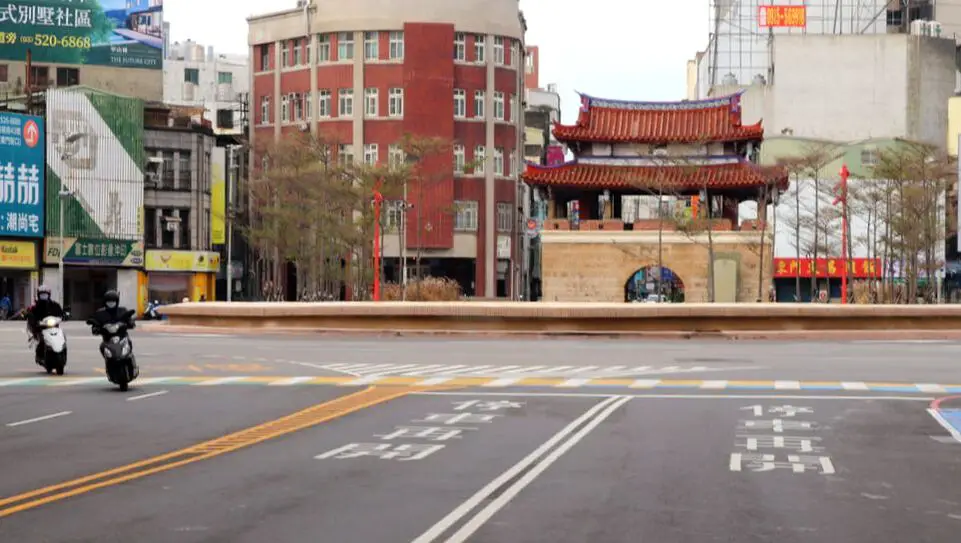
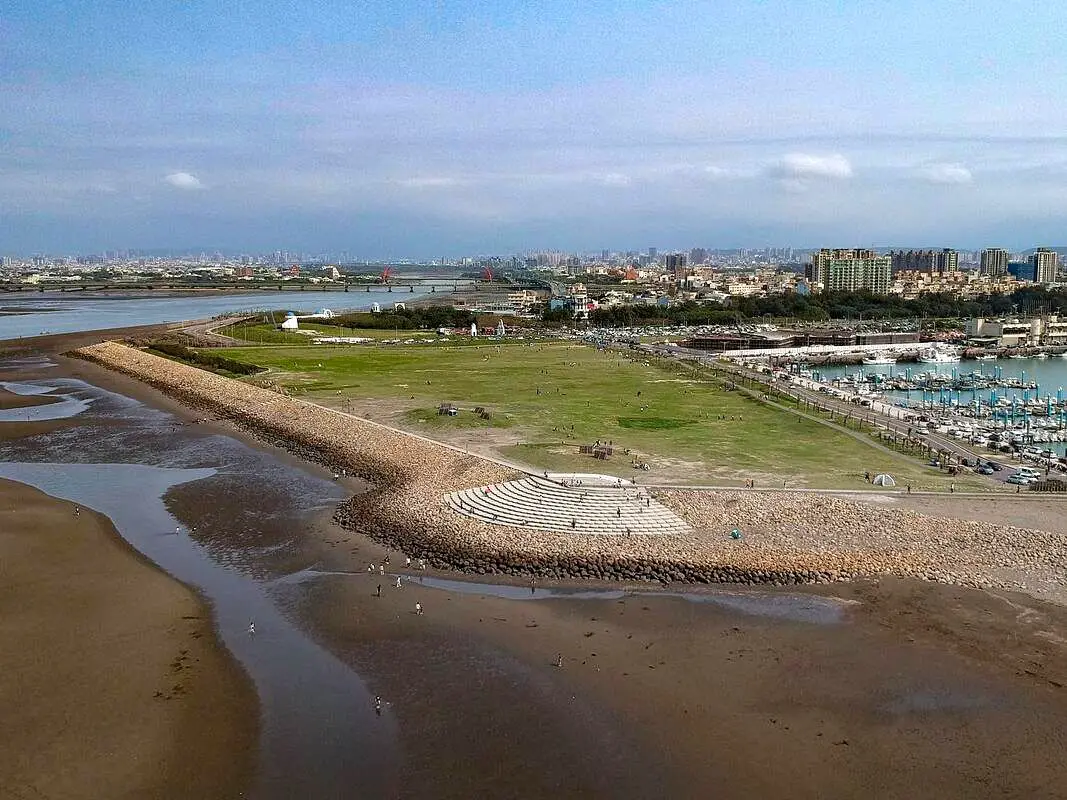
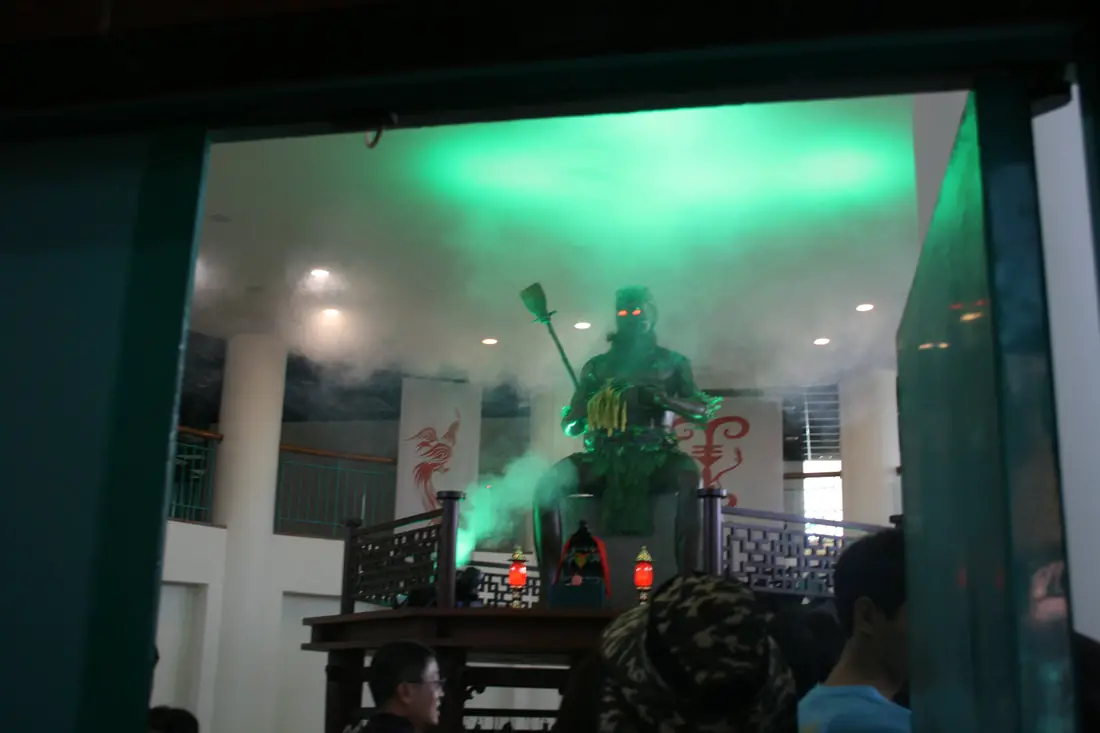
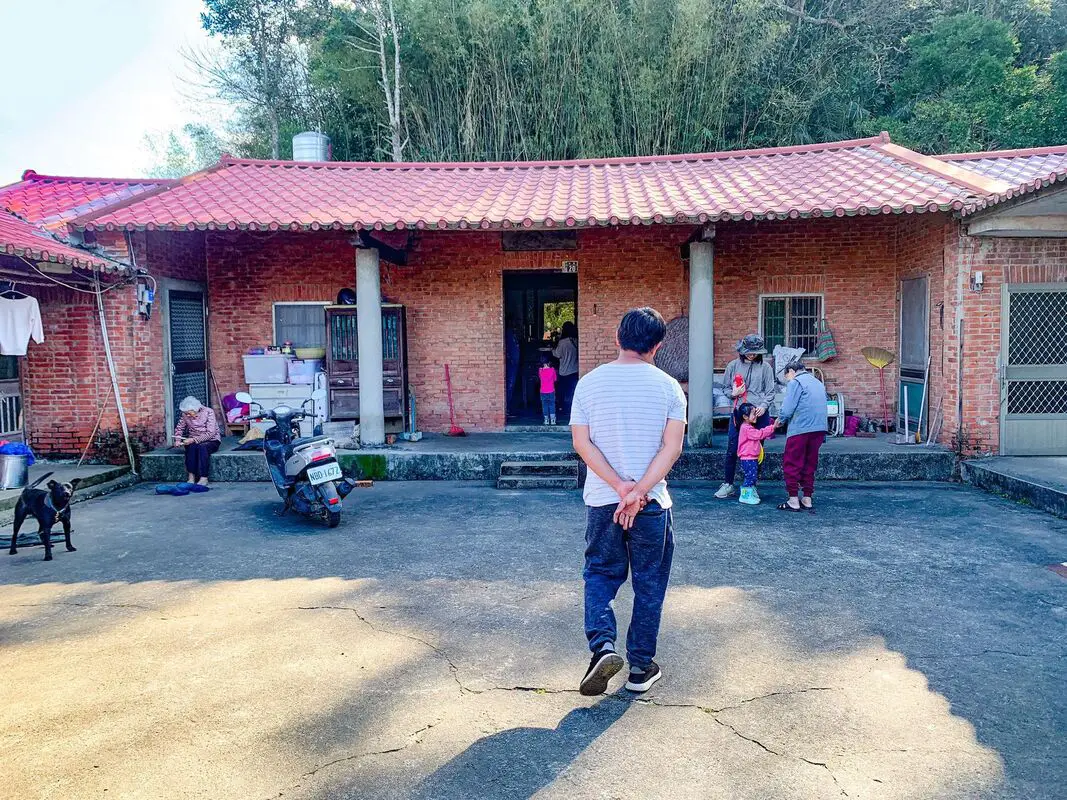
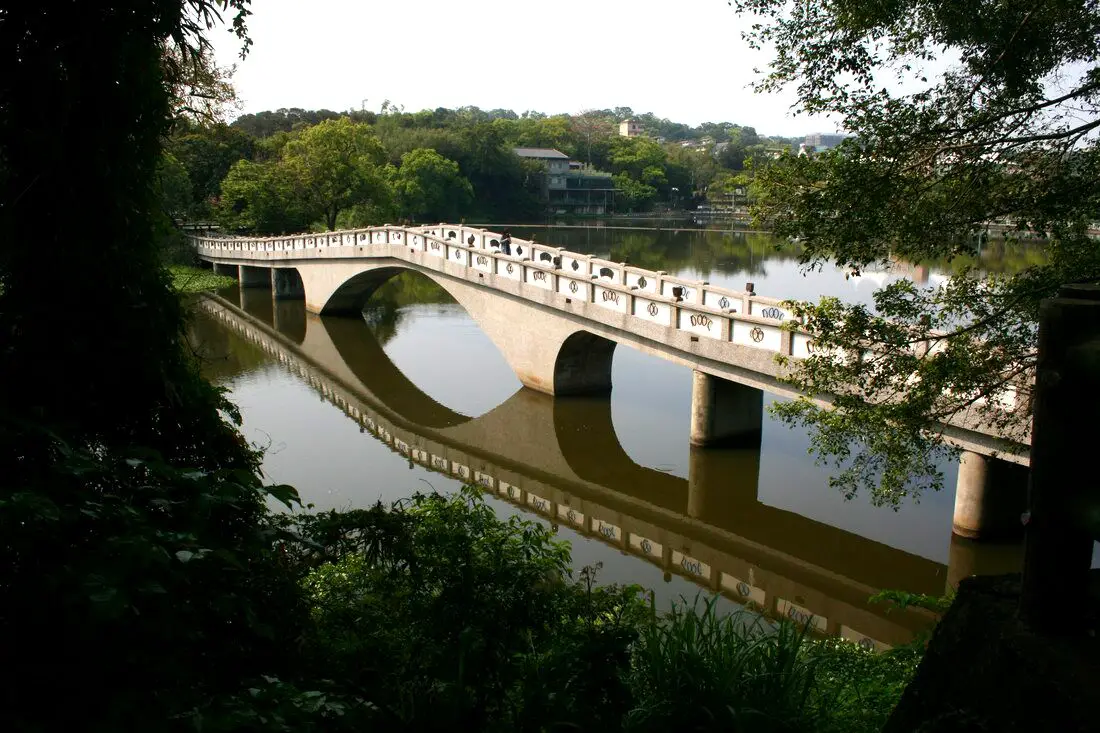
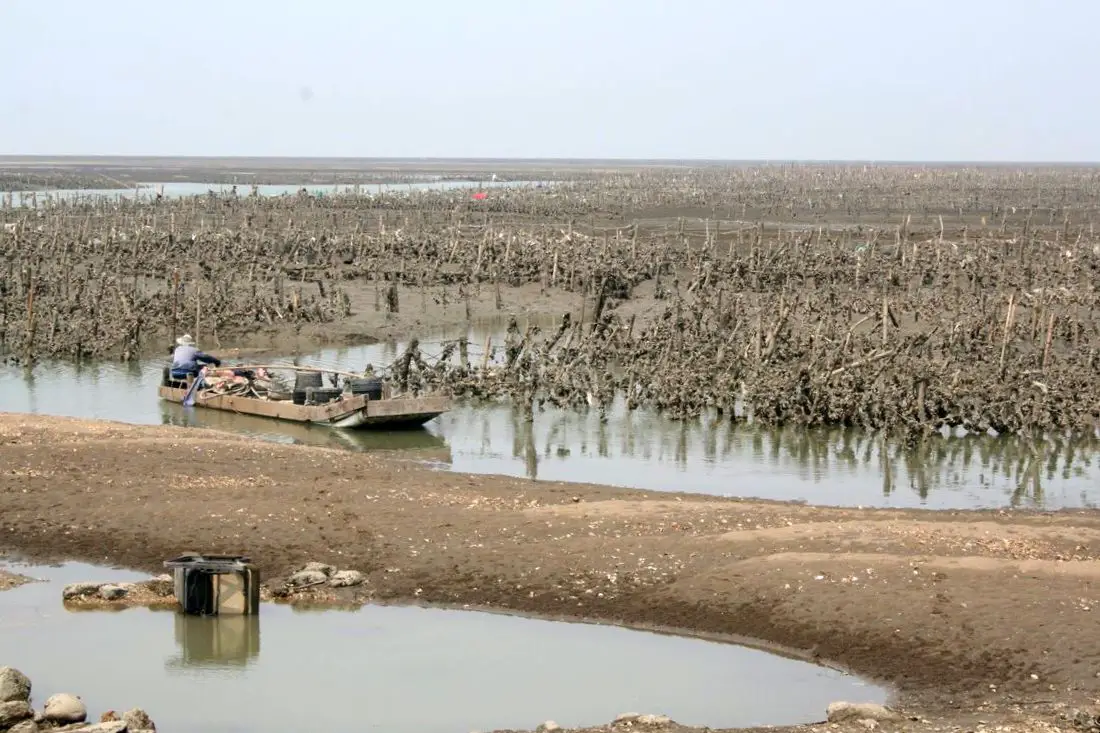
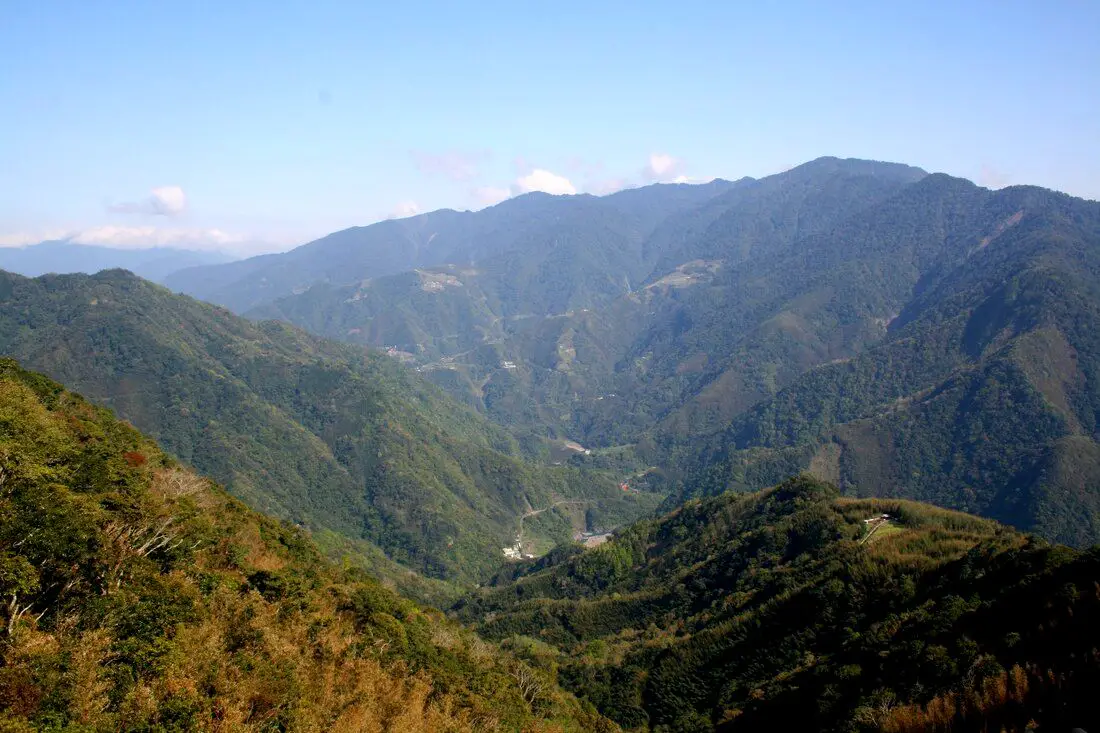
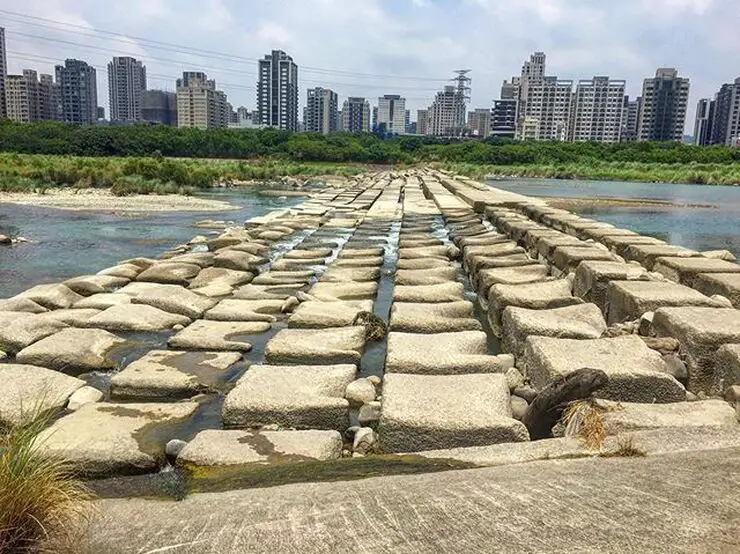
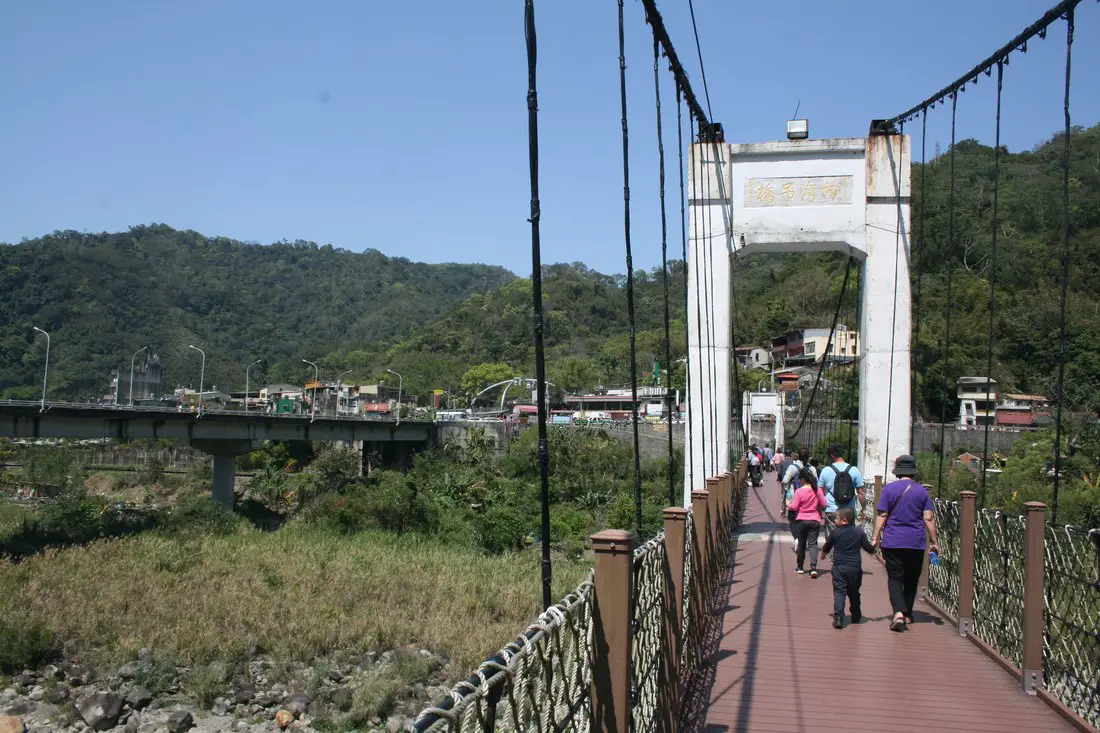
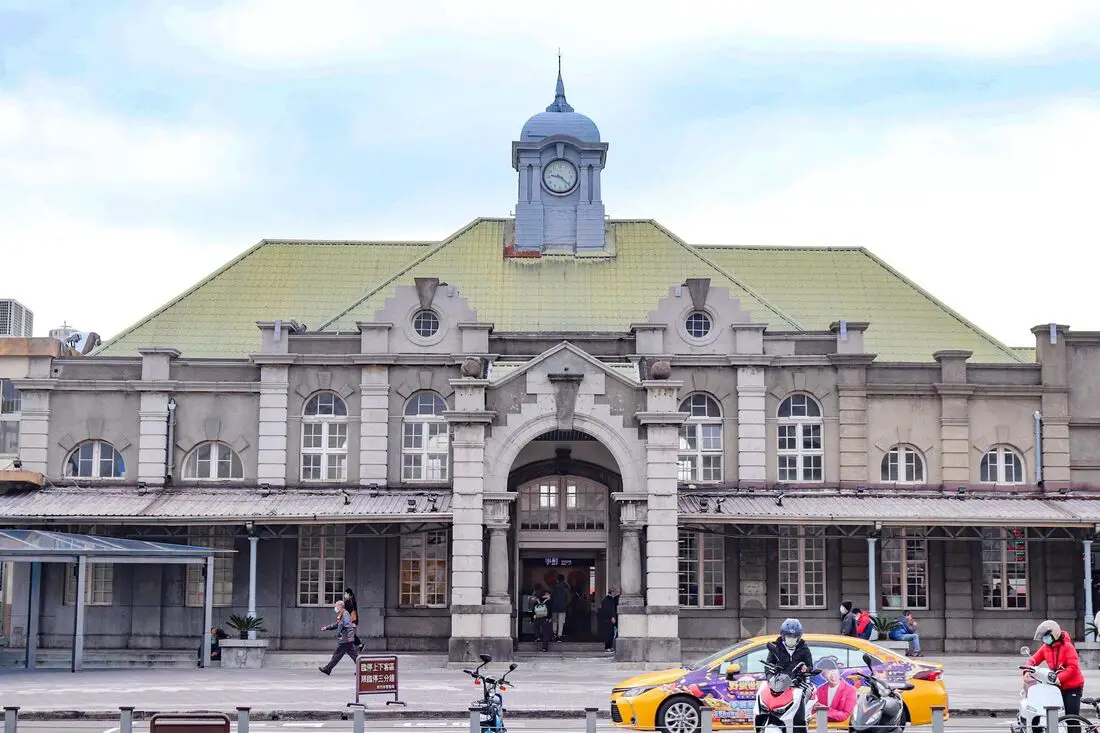
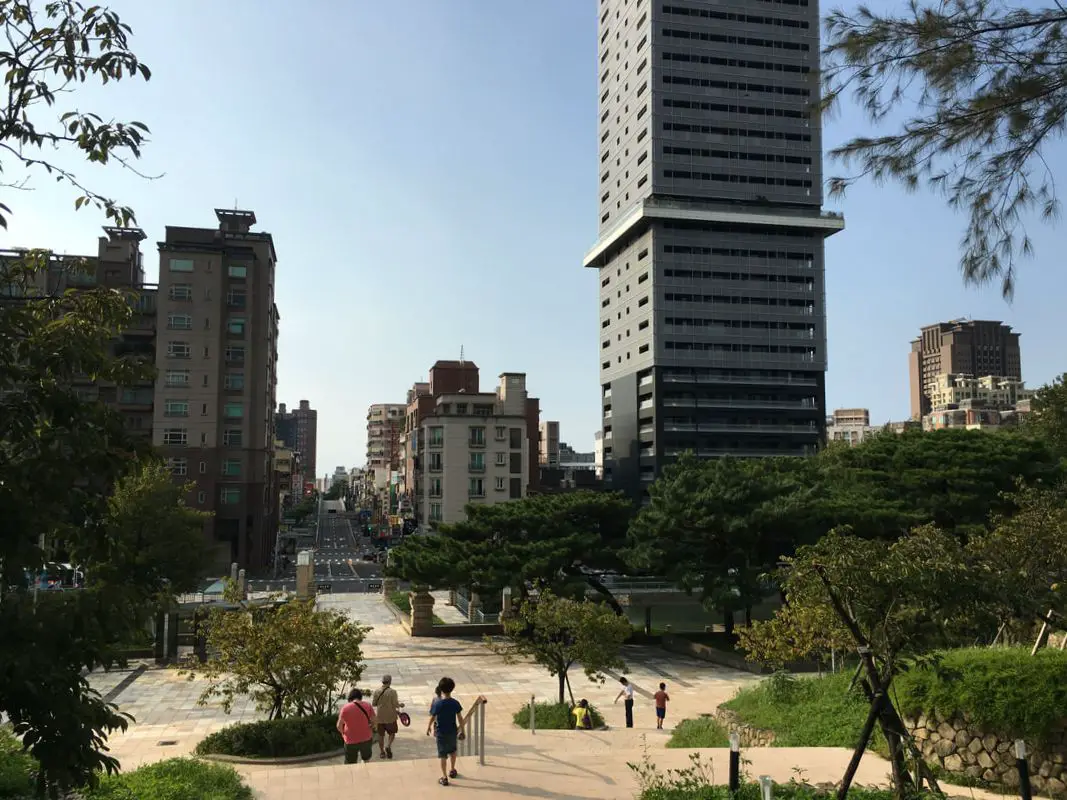
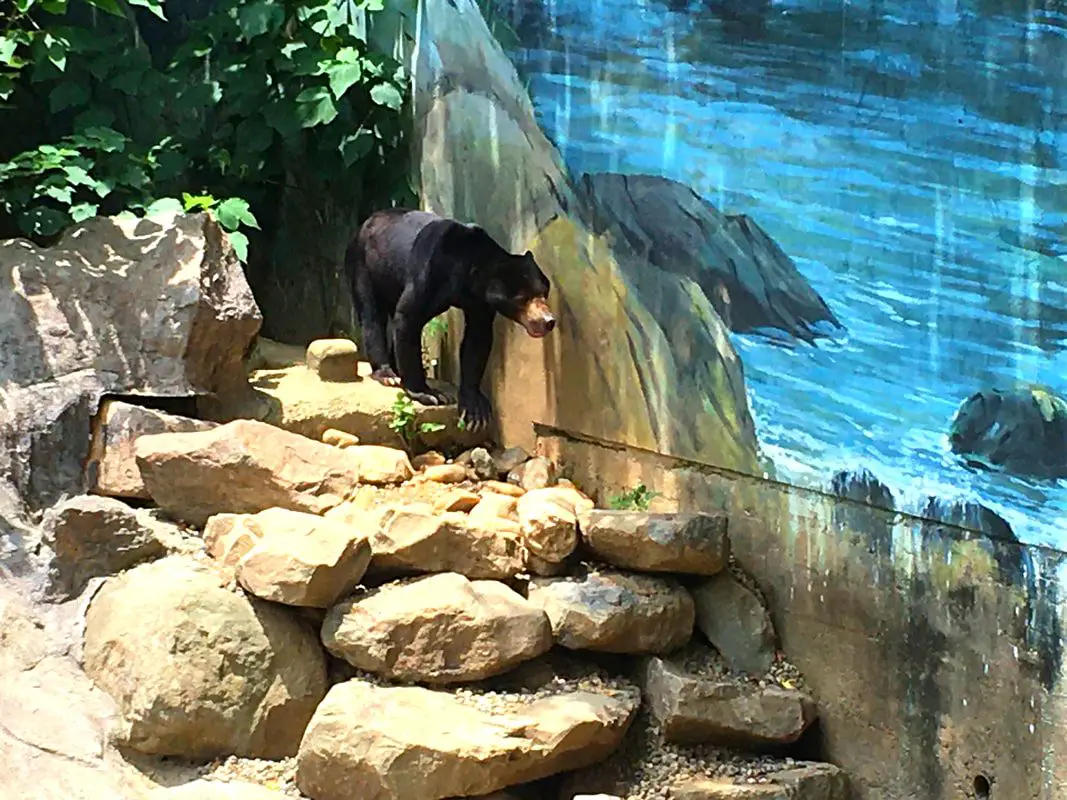
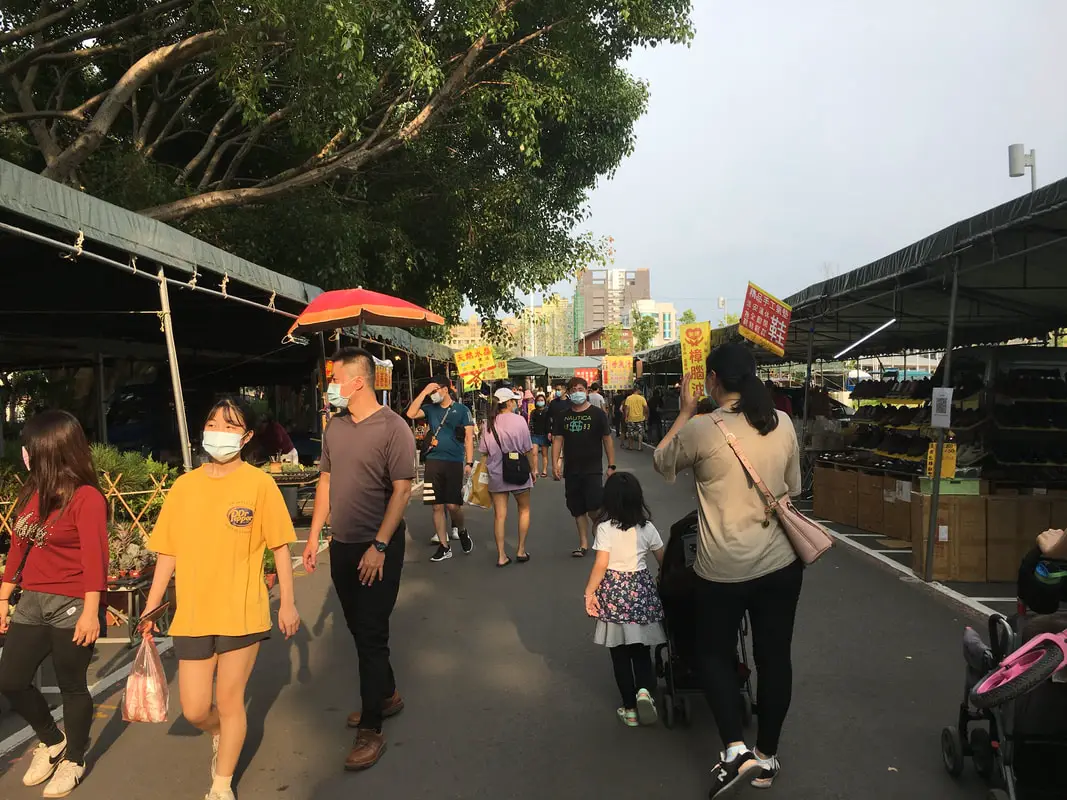
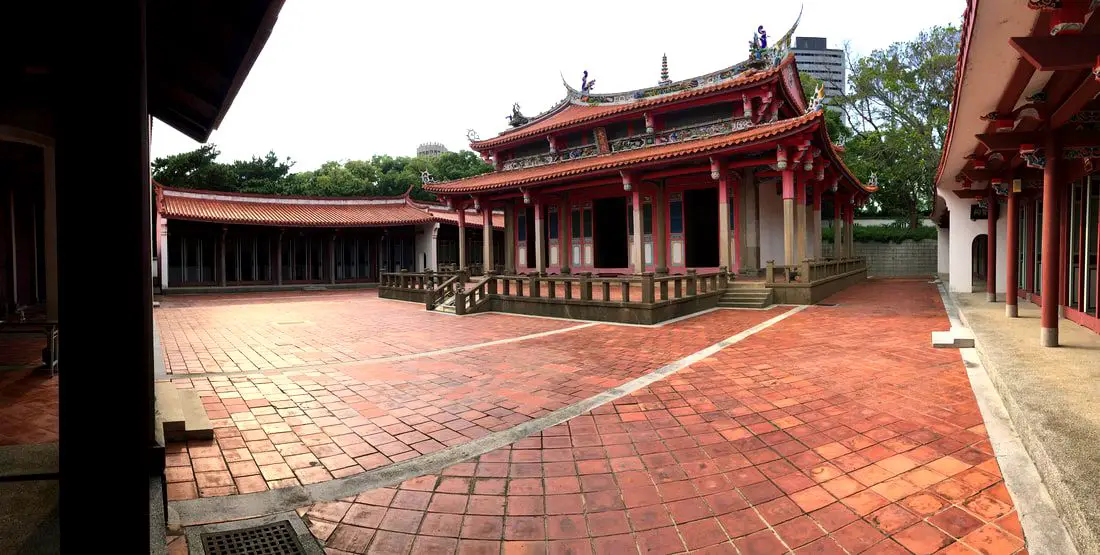
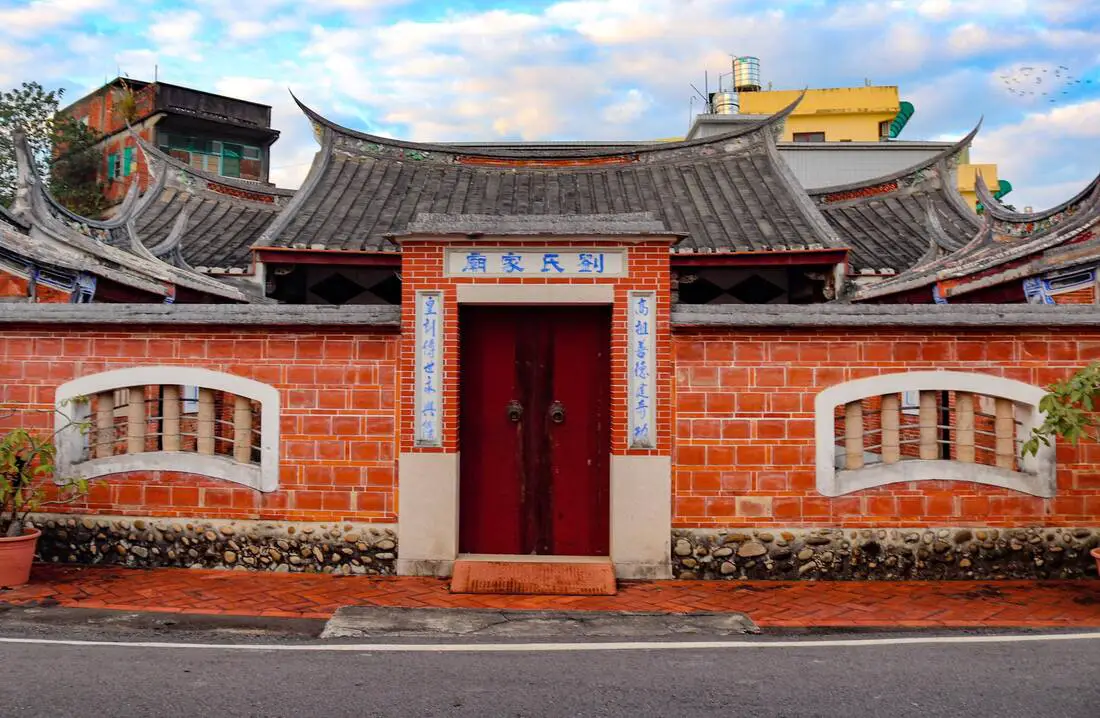
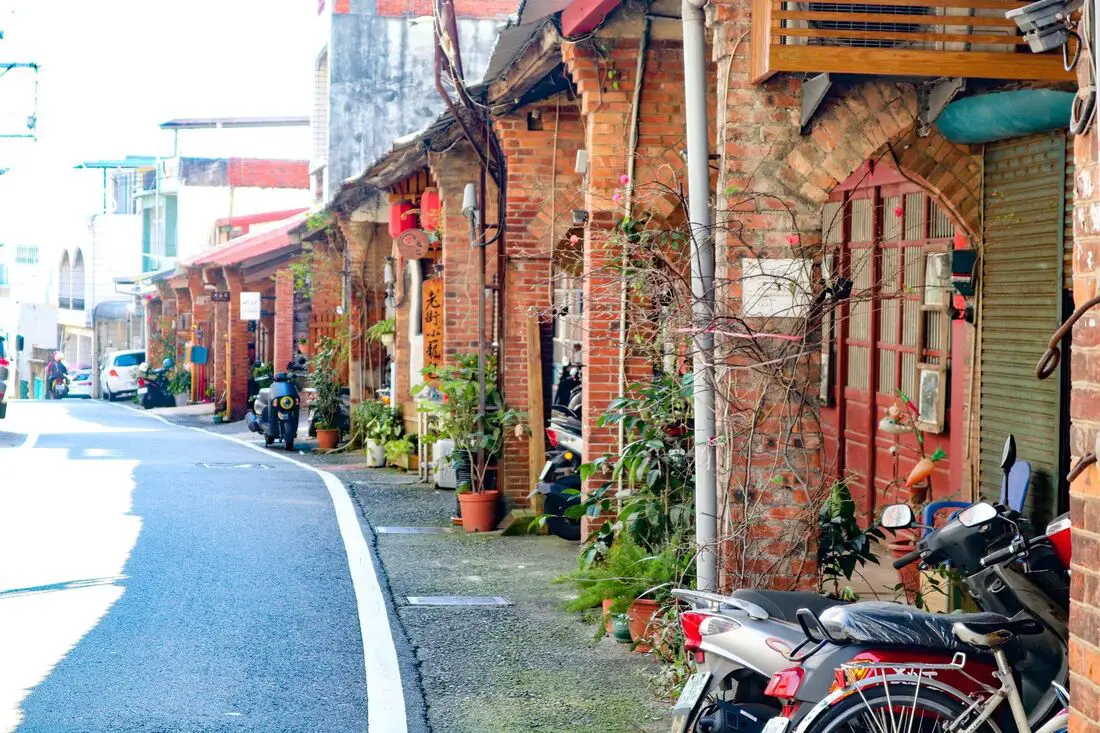
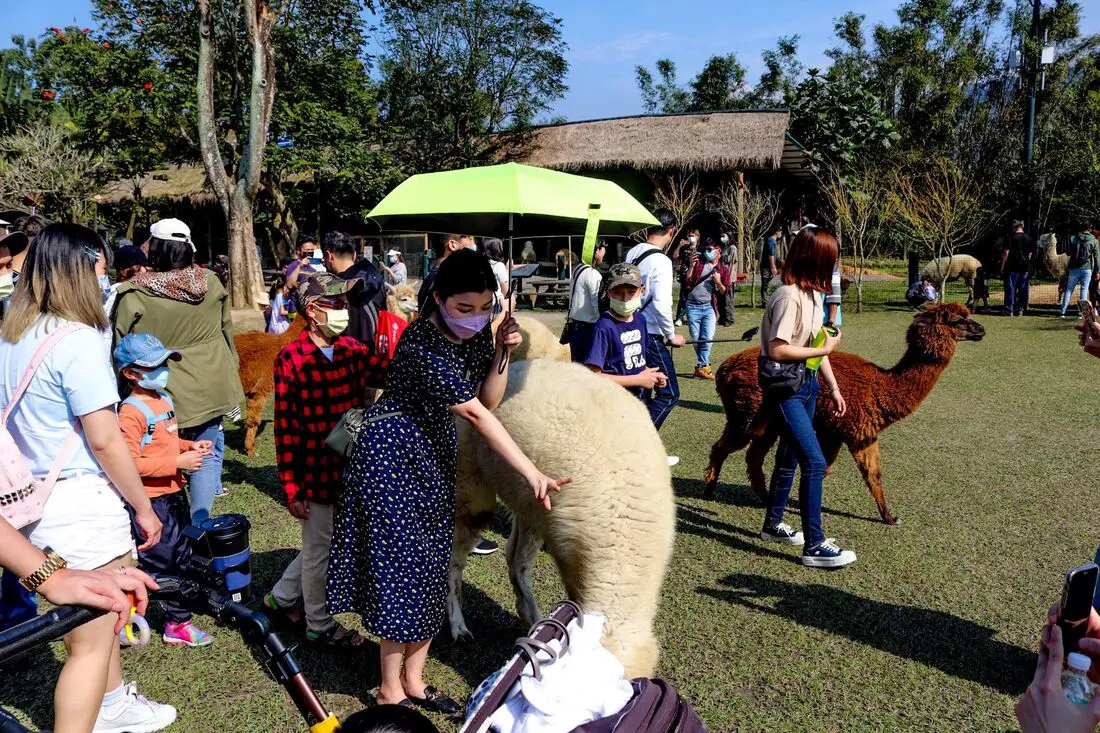
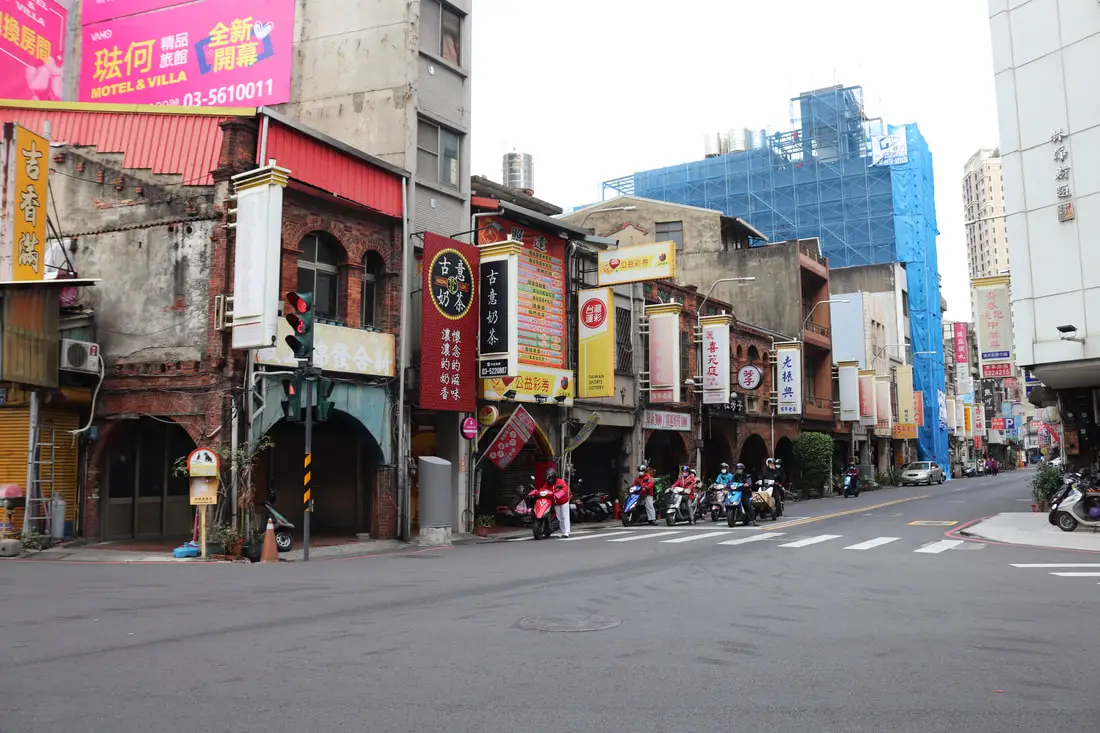
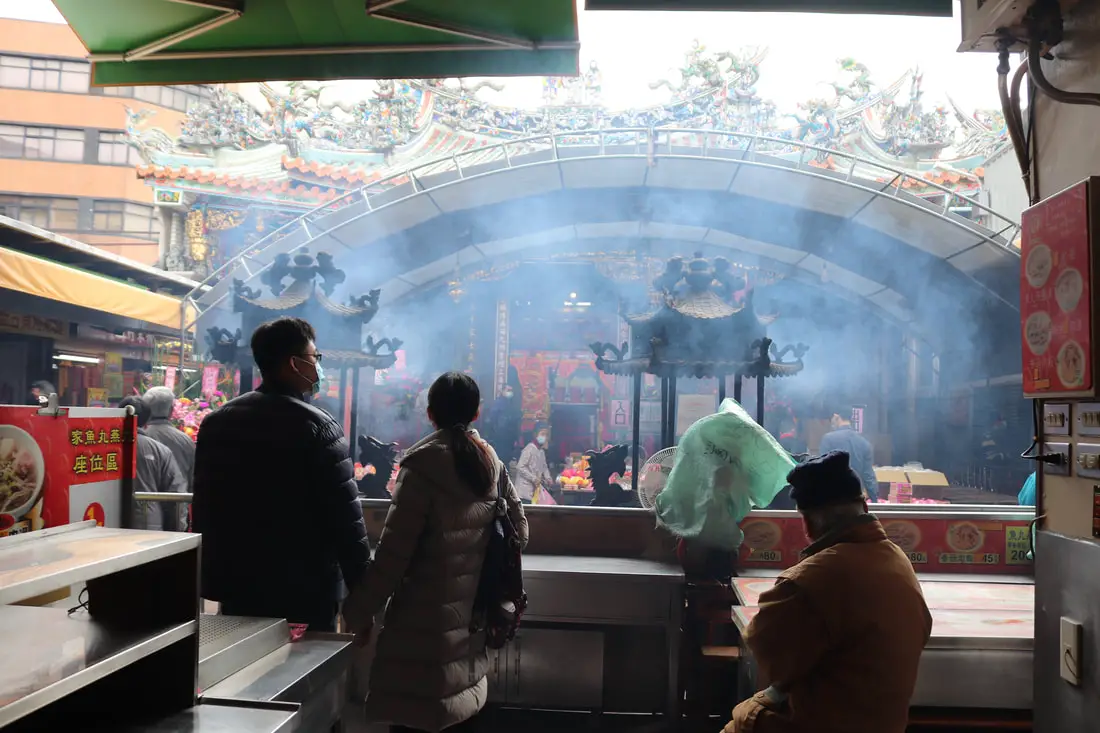
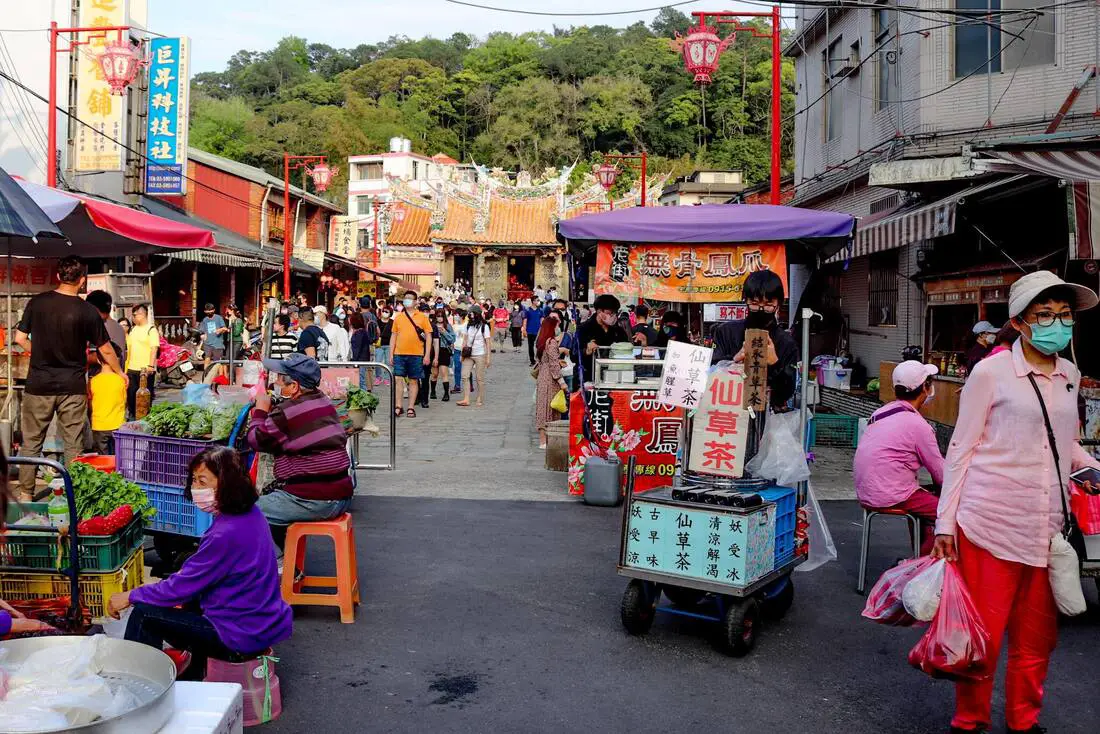

 RSS Feed
RSS Feed
